Archives
now browsing by author
Happy New Year 2016!
To all of you who regularly followed VivaLaVida’s journey, it’s time to give you some news…
Back to Switzerland in early June, the life surprised me with a beautiful encounter that changed many things in my life and my future. Thus VivaLaVida’s journey has stopped and will not resume, at least in the same way. I’m still thinking about how to reinstate me, socially and professionally, in a world where I wasn’t supposed to come back anytime soon!
VivaLaVida is still stored in Salt Lake City, he hasn’t moved since late May. However, it’s well sheltered in a warm storage and should not suffer from this extended stay. I’m currently evaluating the possibilities for exporting and registering it in Switzerland. Nothing is done yet but it seems that this should be possible without major works. It would please me to be able to keep it to travel in Europe. I will keep you informed. 😉
It’s high time for me to wish you all the best for 2016, with many travel in all shapes, health and an open mind to all the positive experiences that life offers!
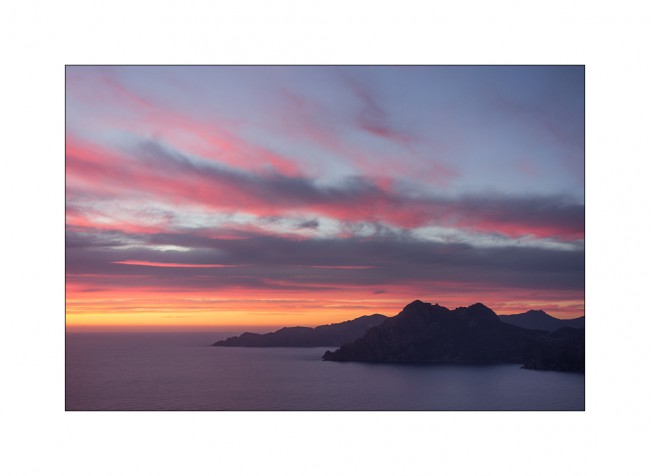
Way to salt Lake City and…
After waiting on a workshop that told me they could do the work on VLV and which finally didn’t, I had little choice but to join a big city to find a workshop that can do the job “on measure “on VLV.
Anyway, before leaving Moab, I went to visit Hans and Madeleine who had so warmly welcomed me at the end of last fall. I found them in their new home in town. Madeleine having been operated of her shoulder four days before, she has no choice but to wear a harness supporting his arm for four to five months at least. But she seems to take it philosophically. Hans was kind enough to advice me a workshop in Salt Lake City, that really helped me.
I therefore took the northbound road and met some nice thunderstorm clouds … Sorry, the pictures of this page were made with my iPhone, the quality is poor…
1. Large thunderstorm cloud.
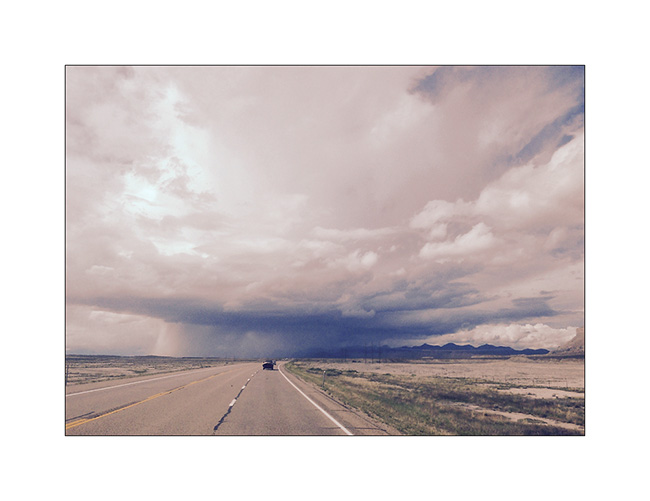
2. In a few moments VivaLaVida will cross the thick curtain of rain.
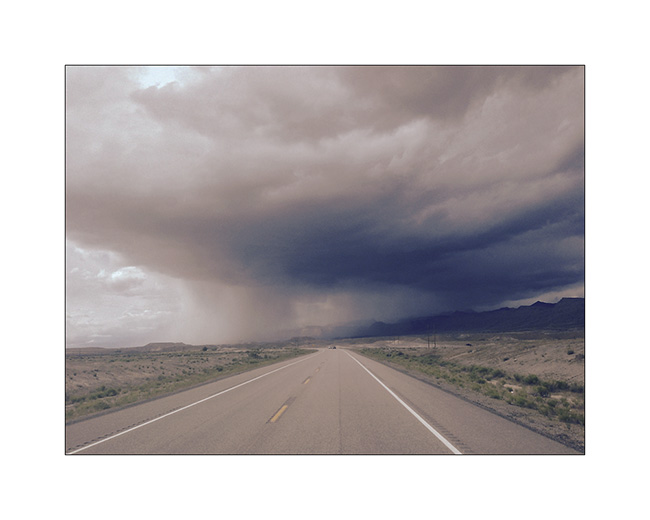
Arrived at SLC, VLV wouldn’t start the next morning. It seems there was quind of aa short circuit in the starter system. I finally managed to crank it switching on house batteries and to reach the Ford dealership. They diagnose a bad alternator, only the third in less than two years ..! Above all, I was surprised by the diagnosis because I do not understand why this would prevent VLV from starting since the batteries were ok. After more than 6 hours of waiting, they tell me that everything was ok. I left, stoped less than a mile awayr to buy something and when I turn the key to start again, the symptoms were the same as in the morning! I decided to control the main engine ground and once cleaned and squirt in WD40, VLV starts without worries… I will returned the next day at Ford to request a refund of more than $500 of repairs that wasn’t the issue..!
The next day, I worked in the Advanced 4×4 Vans workshop to relocate the new oil cooler and add a motorcycle fan to enhance cooling when traveling at low speed on the trails. Arrived at 8 am, left at 18h, a big day of mechanic but a positive result with the oïl cooler now vertical on the passenger side allowing cool air to reach the tranny and water coolers.
3. A quind of oldschool workshop with competent people…
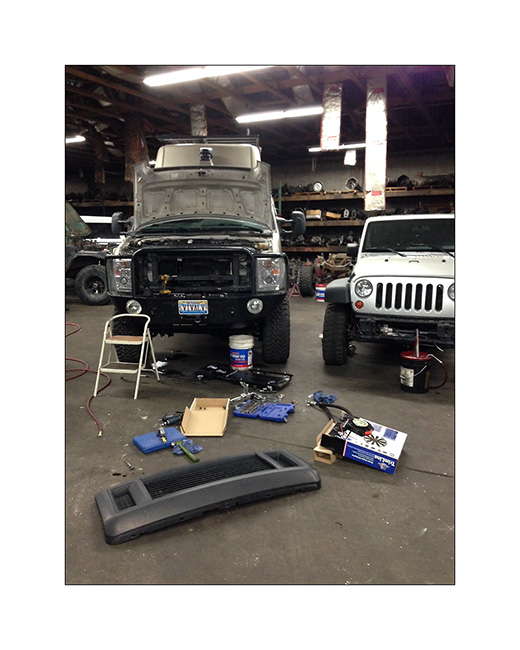
4. Relocation of the new oïl cooler, vertical in left side of the picture..
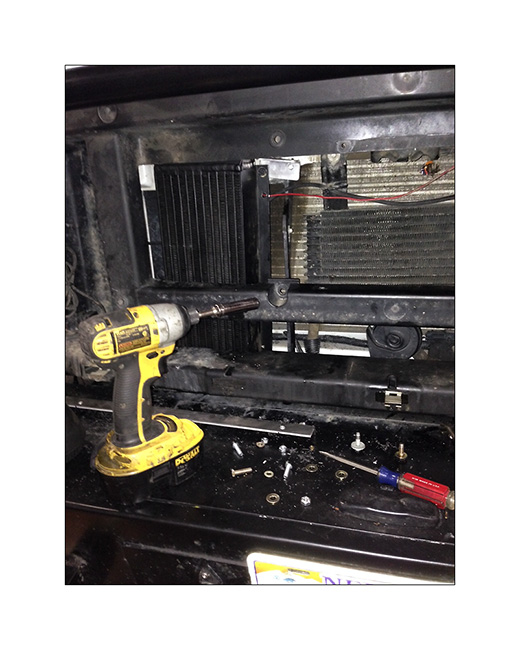
Here is a breaking news which will undoubtedly surprise some of you. For family reasons, I’m gonna interrupt VLV’s journey and return to Switzerland for an indefinite period. This blog will thus stop with this update and will reanimate when I will find VLV back, probably not before fall. I found a storage where I can leave VLV sheltered and safe not far away from SLC airport. While you’ll discover this, I’ll probably be on the plane that will take me back to Europe …
I want to thank you all for your loyalty during the almost two years I tried to animate this little diary, sharing quite a few images that the places VivaLaVida went to explore inspired me. Your regular comments constituted a kind of friendly link that kept me company throughout the trip. Thank you all for your loyalty…
Hikes in Utah…
During Memorial Day Weekend, I held waiting for mechanical work on VivaLaVida discovering some surrounding canyons.
1. Going up Mill Creek canyon in a rainy day…

2. … I discover this pretty small waterfall.

3. Higher in the canyon, is a cave whose traces of soot on the vault attest that it served as a shelter for Indian people years ago.
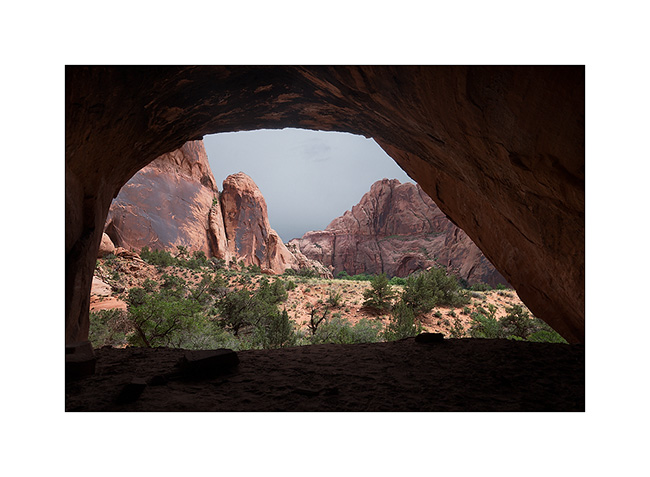
4. The next day I went discover the Negro Bill Canyon, renamed since with an unpronounceable name for “political correctness” reasons. The unusually wet spring in this region provides more water and greenery than it’s common here.
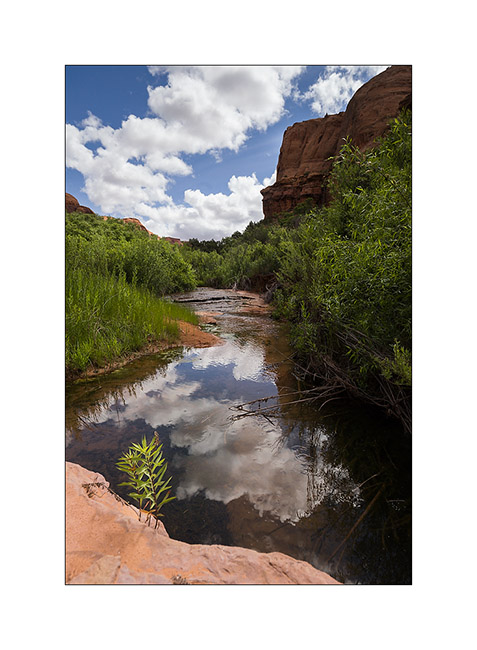
5. Arriving near Morning Glory Arch.

6. It’s a place where tourists offer some thrills rapelling from about 120 feet.
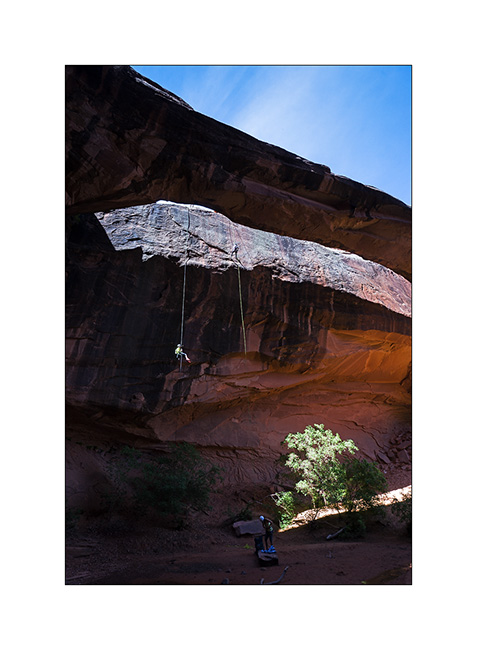
7. There is quite some air with a second portion away from the overhanging cliff.

8. Giant arch.
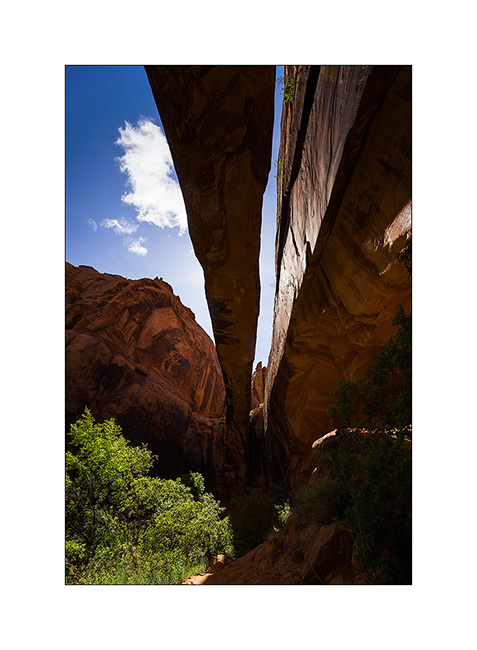
9. Hiking higher in Negro Bill Canyon, widely flowery.
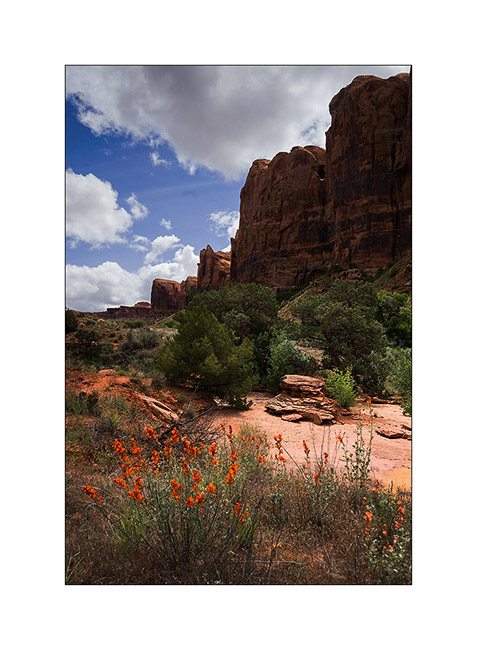
10. Cacti offer many yellow ar roses flowers.

11. Small waterfall down the cliffs.
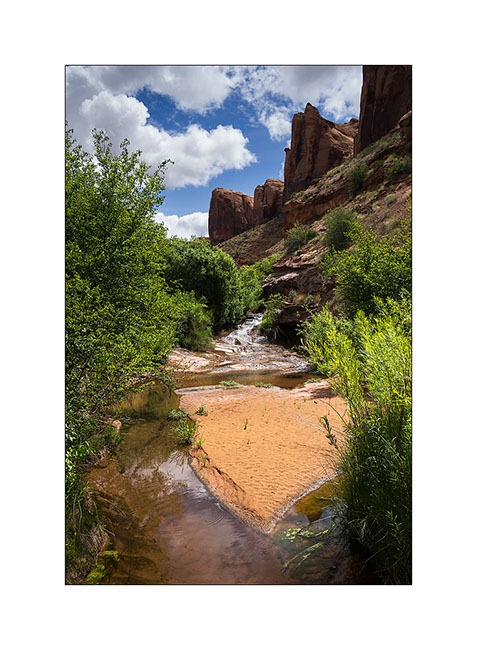
12. This one looks like a lys…

13. Not far from the mouth of the canyon, water runs on the sandstone.
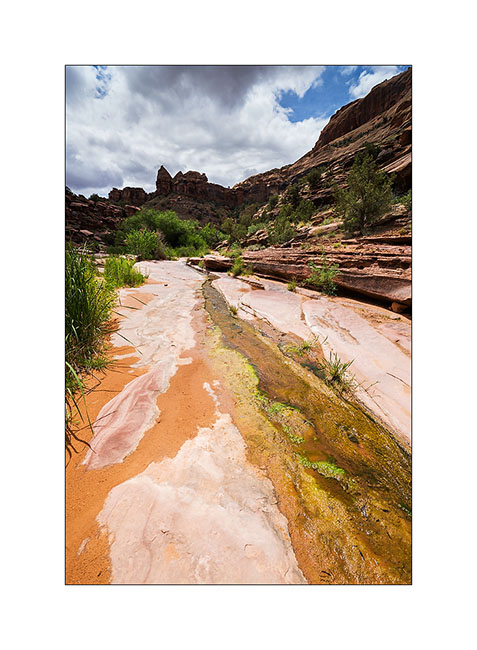
14. The place is wild and desert despite the crowds of Memorial Day.
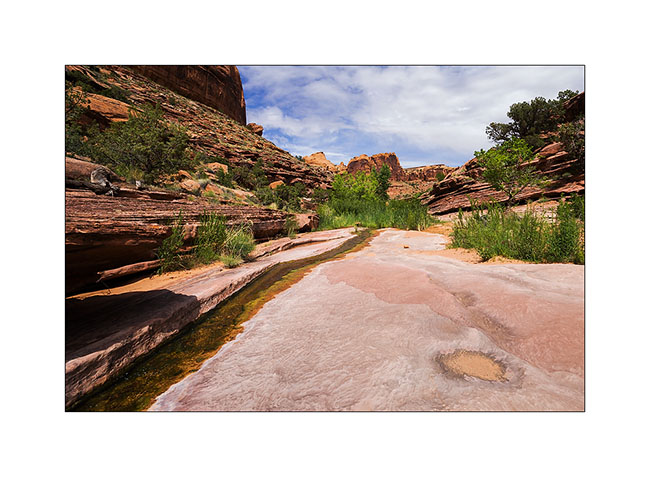
15. Last compo before going back to VLV and heading to Salt Lake City to do the work on VLV.

To be followed soon. 😀
The journey resumes…
Thank you for your latest messages triggered by the long rest of the blog. Vivalavida received important works, including the modification of the entire oil system to try to improve cooling. The oïl to water exchanger has been removed and replaced by a large oil cooler controlled by a thermostat. I hope that recurring heat problems will be if not solved at least reduced.
After the long break period, VivaLaVida has hit the road again.
1. Heavy thunderstorms dot the plains of New Mexico.
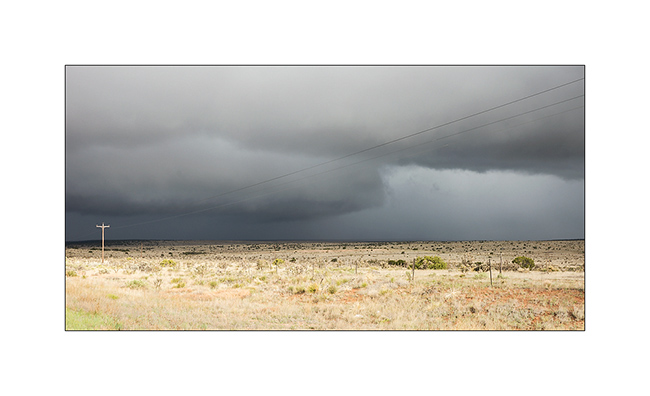
2. Some dump hail..!
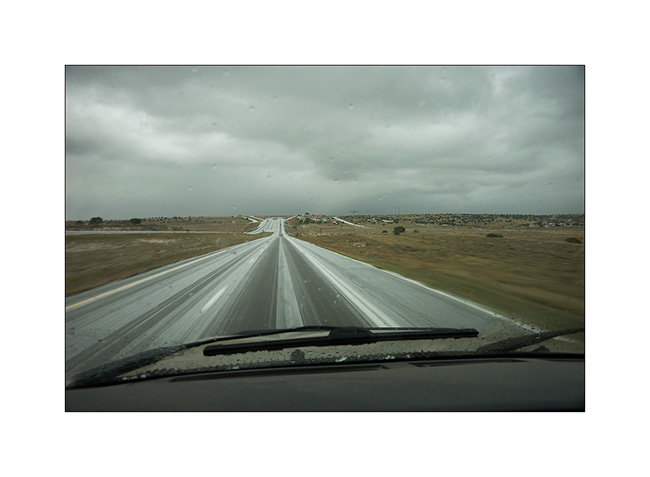
3. I make a stop at the Overland Expo West, South of Flagstaff, where I see John & Mandi again who started their journey since two weeks for their Pan American: from Alaska to Patagonia…

4. Camping stop with Chris and Jennifer on the shore of Lake Powel.
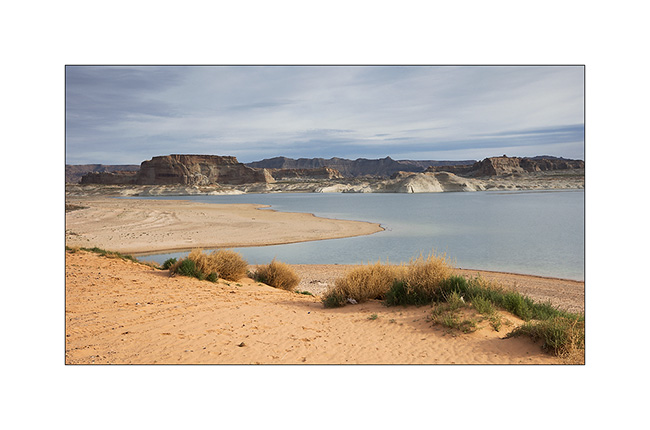
5. V4 with the “Sherpa” installed, the Chris’s very special van going up the Grade Kelly on the Smoky Mountain Road.
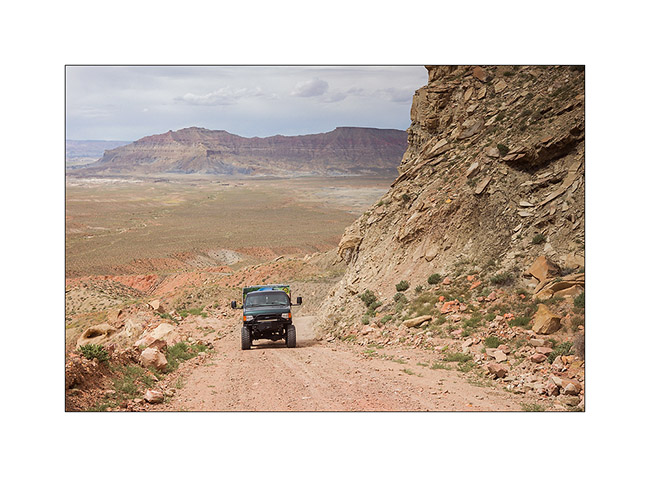
6. Camping at Deer Creek, along the Blurr Trail. The Sherpa is a base station for group camping. It offers a double bed in the upper part once lifted.
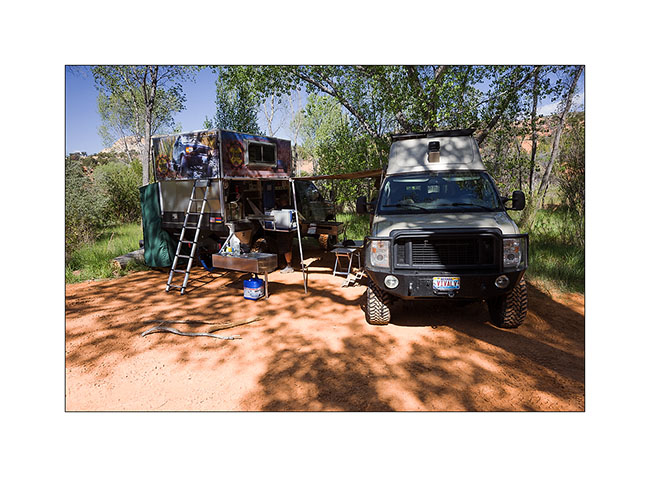
7. Fantastic view over the north of Capitol Reef and the Water Pocket Fault.
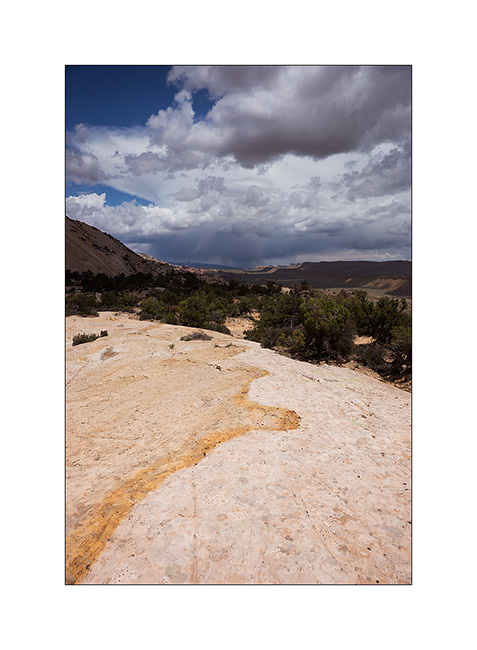
8. View toward South.
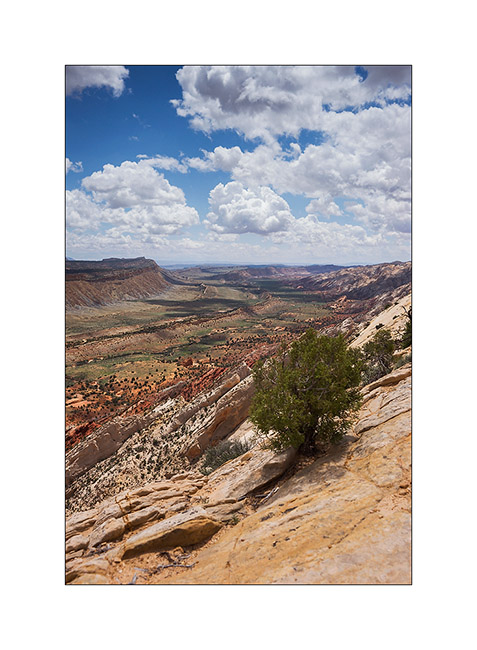
9. VLV in the Upper Muley Twist Canyon.

10. V4 going down the Blurr Trail.
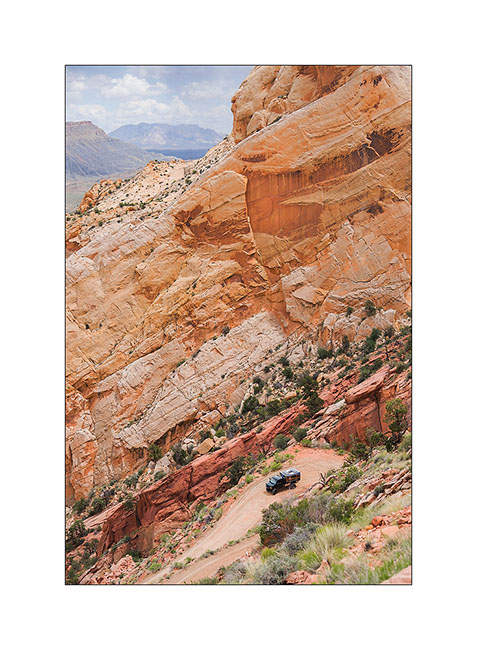
11. A few hundred feet below, it is only a small point…
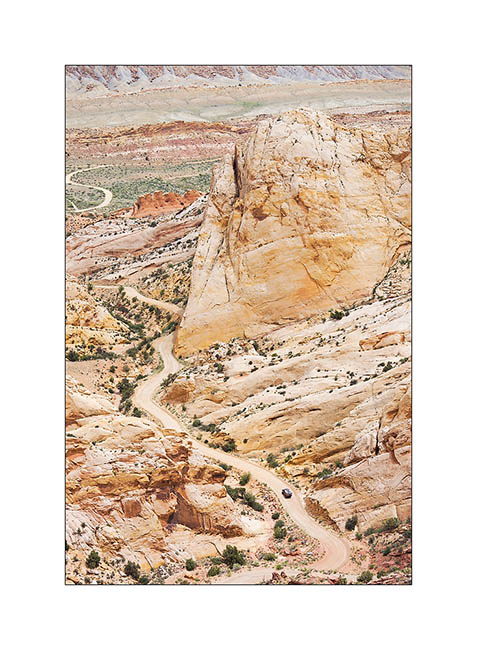
12. Temple Mountain Under thundersotrms.
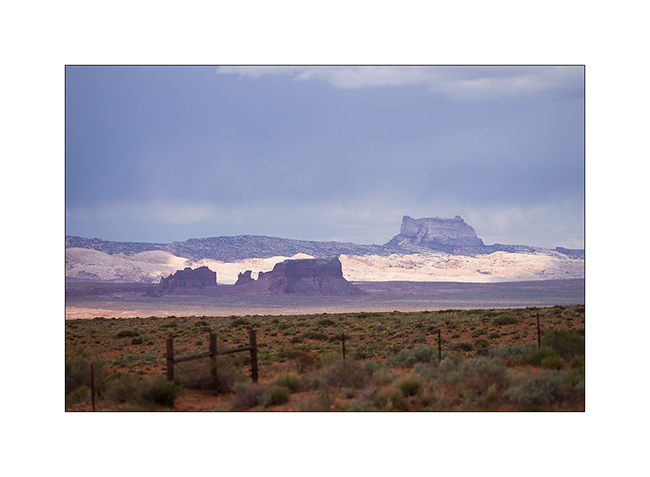
Vivalavida is gonna stop again for some technical changes, the oil cooler mounted recently needs to be repositioned. If it significantly lowers the oil temperature, the hot air flow is building heat in the transmission. We must find another solution.
So expect a few delays before new updates… 😉
Back in North Carolina
After almost a year and a half, VivaLaVida found back the place where he had left.
1. Last stretch of winter roads in Smoky Mountains.
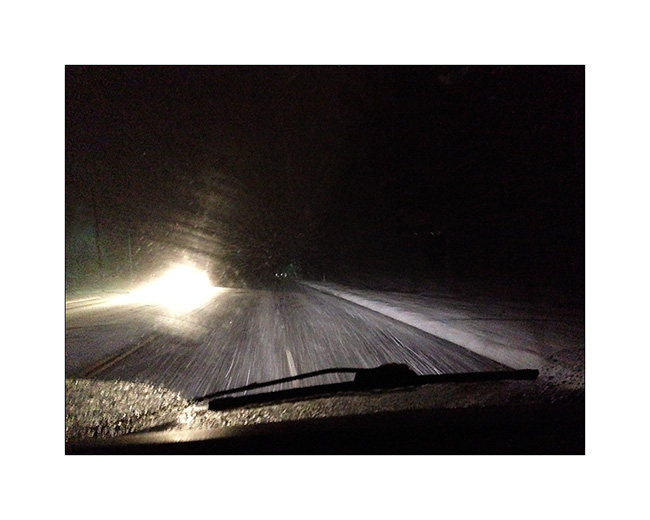
2. Wake up in the snowy forest.
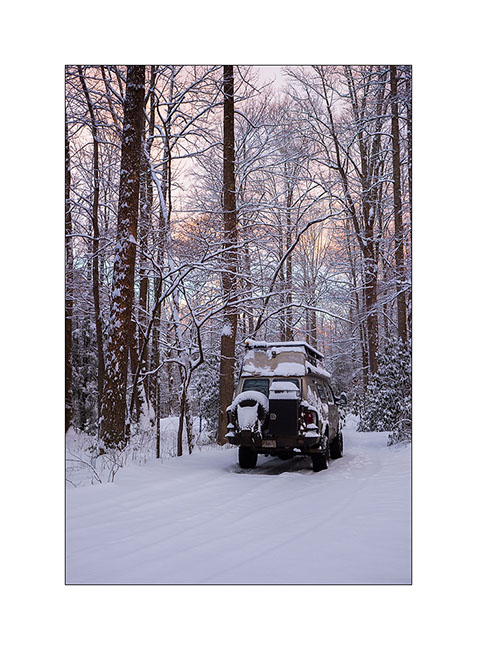
Before returning to Switzerland for a few days, I spent a relaxing day with the U-Joint Offroad crew in an unusual snowfall in the region.
3. Assault of forest roads!

4. Neil is warming up!
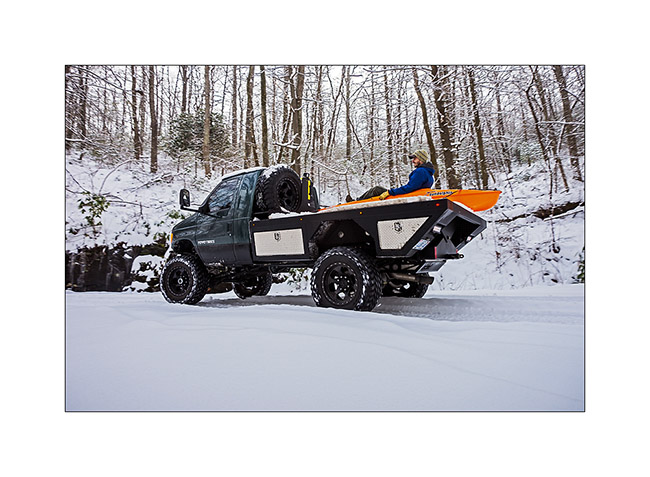
5. First paddle strokes.
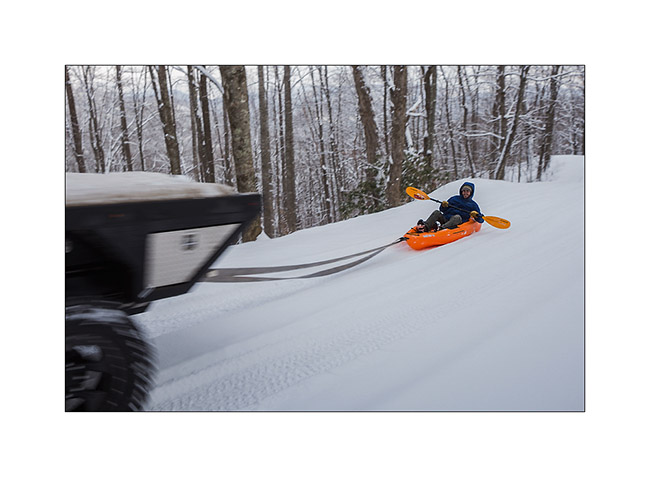
6. Surf.. 😉

7. He tries to stand up…

8. Done ! 😀
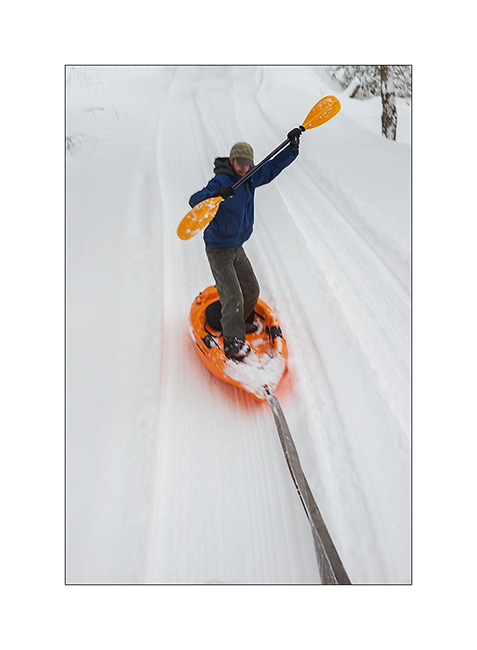
9. We must help each other, right?
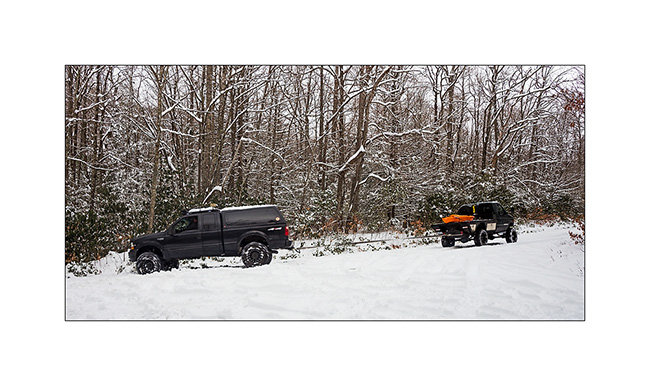
10. V4, Chros’s very special vehicle.
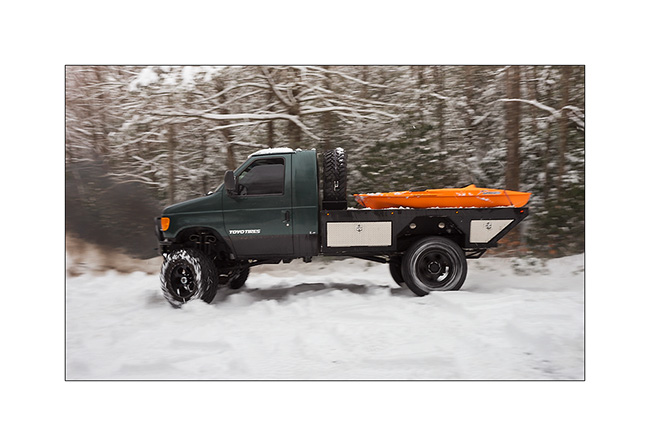
My stay in Switzerland went well despite the sustained pace of meals with family and friends. A period of a little more frugal meals is required now… 😉
I met some people to a group camping organized by U-Joint Offroad over the Easter weekend.
11. Camping with many vans in an almost spring atmosphere.
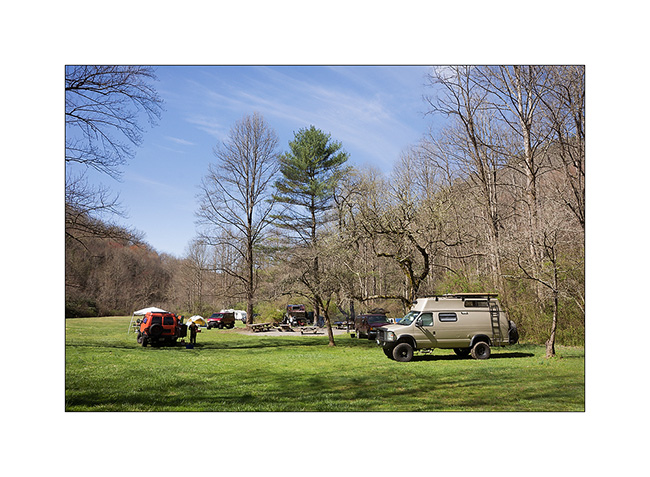
12. Mathys, Chris and Jennifer’s eldest daughter. Cute, isn’t she? 😉

13. And the twins: exactly one year old today!

14. Nathan and his eldest enjoying the campfire to grill some marshmallow 😀
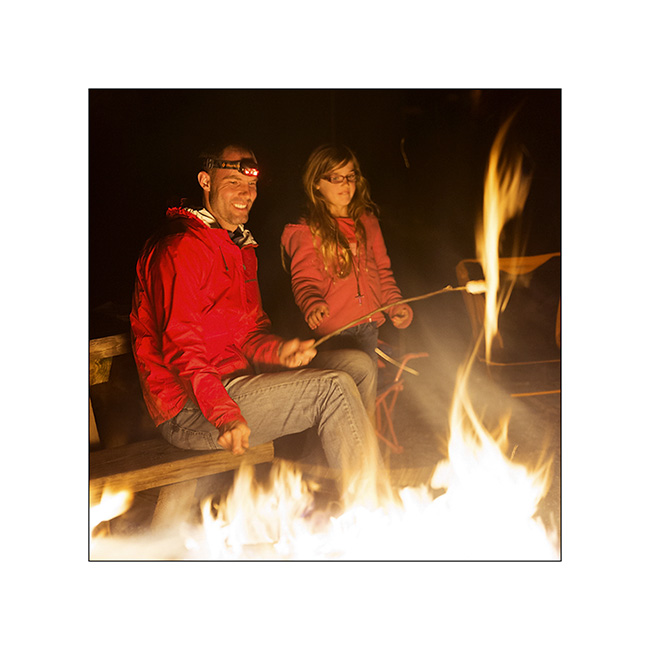
That’s it for this little update. However, the blog will still remain quiet some time since some parts take longer than expected to arrive, making me stay in the area to finish the work on VLV.
See you here soon… 😀
The crossing to the east continues…
Still in New Mexico, I crossed the El Malpais area – “the bad country” – a volcanic site that spread a large lava flow approx. 3,000 years ago…
1. A lava tunnel revealed by the partial collapse of its vault. Its access was closed to protect bats that overwinter there.

2. View the gigantic lava flow from El Malpais, an Hawaiian type volcano. It covers nearly 35 miles.
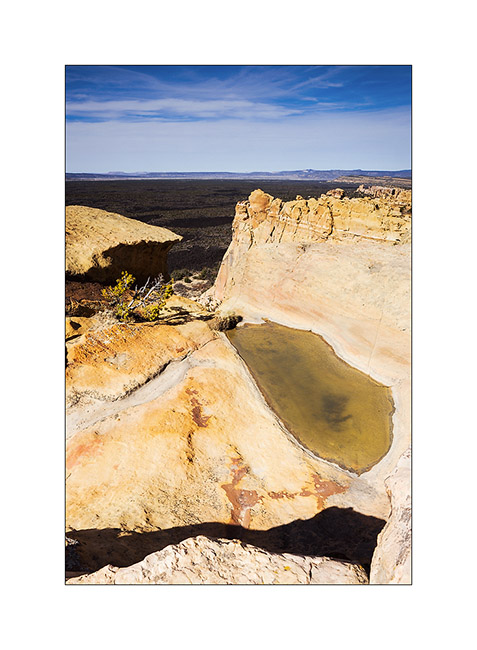
3. La Ventana Arch, one of the largest natural arch in New Mexico.

4. The Pueblo Acoma on a hill of sandstone. I have not been allowed to visit it, the access being restricted, paying and … suspended for the winter!
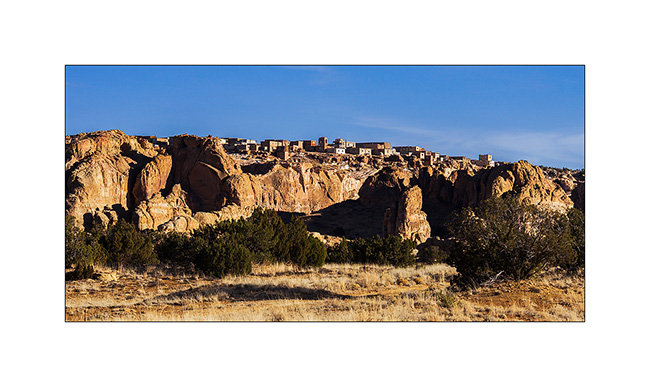
5. Further, the Pueblo Laguna Library and its Hispanic-style church.
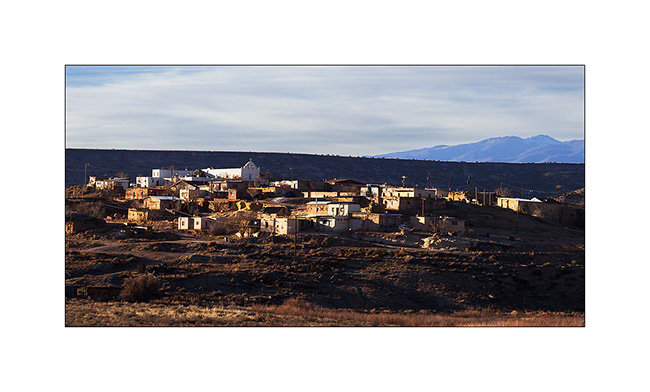
6. The next morning I woke up on the Valdez Caldera, remains of a giant volcano that collapsed on itself. This caldera is 14 miles in diameter!

7. Beautiful sky while there is still a few snow at over 7,000 feet. Yet, for 5-6 years, the place doesn’t receive the usual 6-10 feet snow…

8. East Fork River.
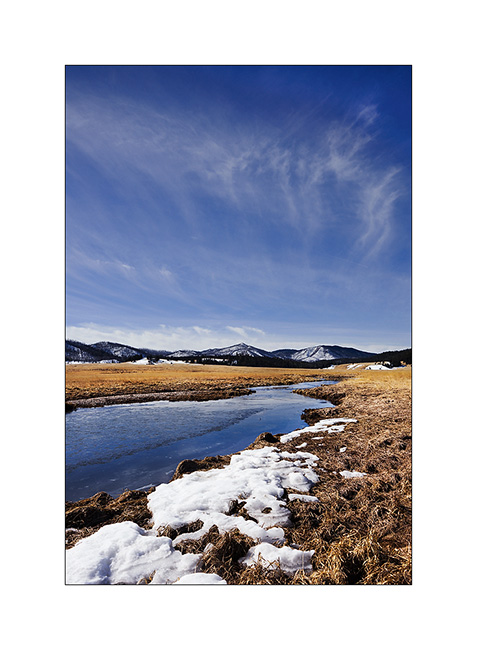
9. By collapsing, the volcano has poured an incredible amount of tuff nearly 55 miles around, sometimes more than 600 feet thick. It’s in a canyon carved in the tuff that are the Bandelier Dwellings. In addition to the cavities in the tuff, the Indian built houses at the foot of the walls. Note the horizontal rows of holes that allowed to fix the frames on the wall.
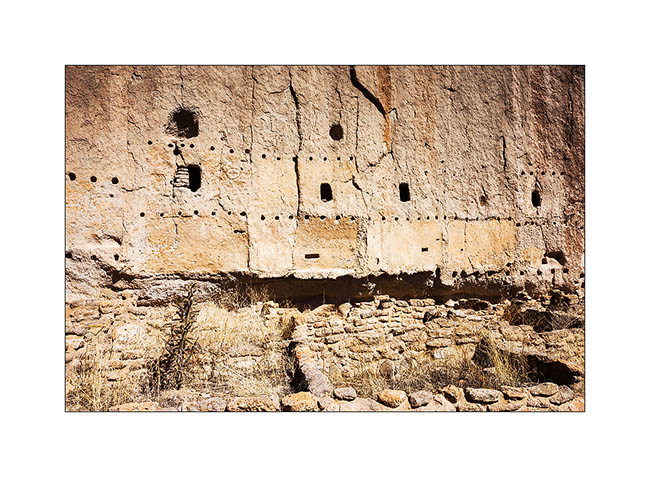
10. Natural cavities.

11. They were connected by passages duged into the tuff. Note soot that still covers the vaults.
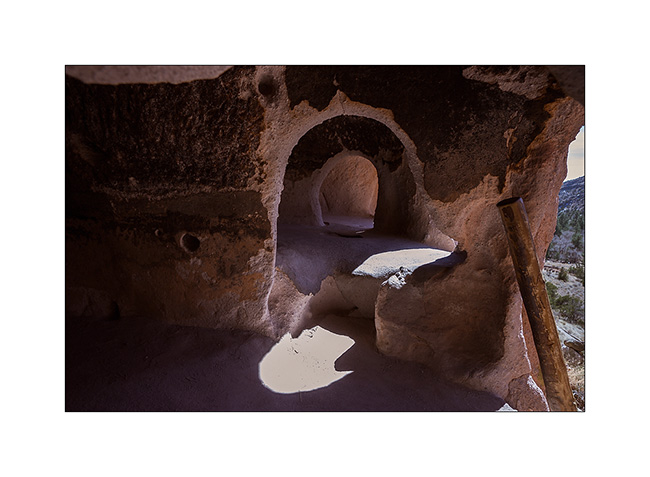
12. At the bottom of the canyon, the ruins of an impressive semi-circular pueblo.
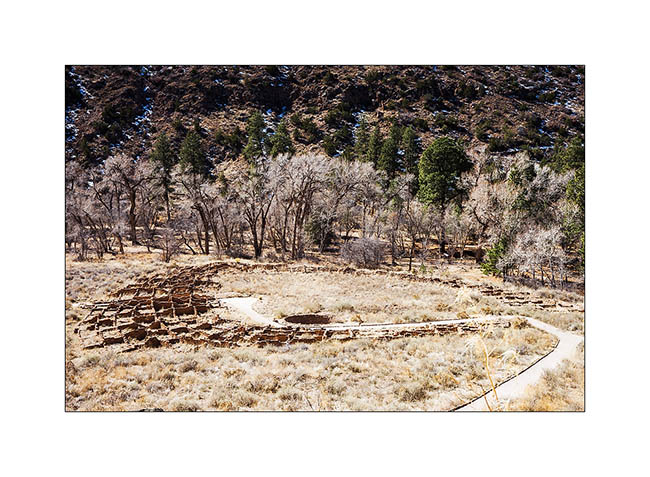
13. A local resident who allowed me to approach, which is rare for a woodpecker.

Further upstream, there is a kiva – a room for rituals and ceremonies – found almost intact under a large overhang; only the roof was rebuilt there sixty years ago. It is 140 feet above the canyon and you have to climb on long ladders to get there.

15. Detour in Oklahoma to discover the original work of an artistic collective: 10 old cars planted in the ground from the front…
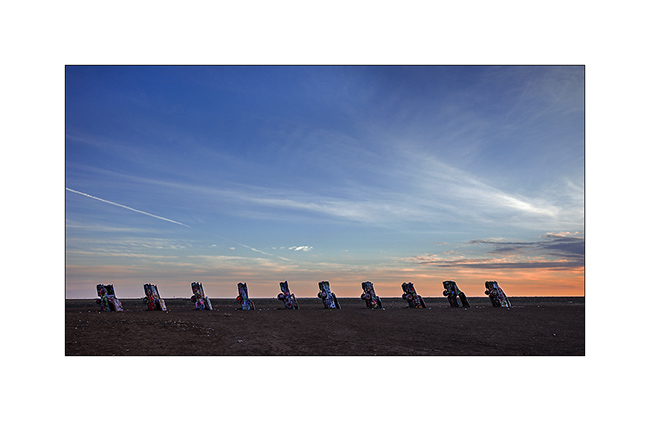
16. Quite original, it must be said. Too bad, I arrived a little late, the light wasn’t great…

17. Winter wake up in the middle of a Wind mill field in which I spent the night. It was blowing a strong blizzard (announced between 50 and 60 mph!) and actual temperature was 15F…

18. Hellish road conditions! Freeway was just a carpet of ice, the few inches of snow fell during the night was packed with trucks before freezing. VivaLaVida traveled almost 450 miles in these conditions, a little tiring for her driver…

19. The next day in Arkansas, it was not much better: snowed all day to more than 400 miles. I stopped counting the vehicles out of the road at 50…

20. It improved a bit as I crossed the Mississippi River in Memphis TN.

Without showing it that much, this update relates to a three-day trip and more than 1,300 miles in very difficult conditions. After a stop at Maryville TN to eat with a couple of friends, I found the snow back on the road to cross the Appalachians but arrived in the region of Asheville safely.
I’ll be on the departure to Switzerland when you’ll discover these lines…
This blog will then be quiet for a few weeks … but will continue to relate VivaLaVida’s journey from early May no doubt!
Thank you for following this journey, I’m always very pleased to read your comments. 😉
Minerality…
Still in Arizona, I made a short stop at Petrified Forest National Park. 225 million years ago, the current Arizona was nearly 3,500 miles South of his actual location, in a tropical climate and thus covered with tropical forests. During large floods on clay areas, trees fell and were buried in the clay that protected them from putrefaction. Over hundreds of thousands years that followed, the clay was covered with new sediment layers totaling till 1.5 miles thickness. The pressure thus exerted generated petrification of wood. Then the continental drift has gradually dried up the soil of Arizona allowing wind and rain to erode the upper sediments and leaving the petrified trunk now appear in the bentonite layers.
In places, the amount of petrified wood is staggering.
1. Bentonite which erosion reveals petrified trunks.

2. The colors are amazing! The density of this stone is such that it takes 4 times longer to a silica carbide saw to cut the same thickness as in granite.
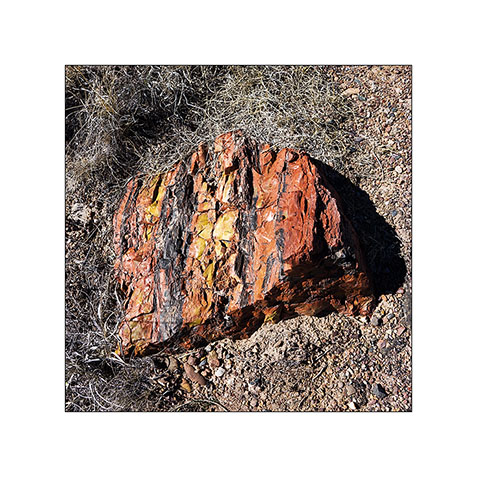
3. Most of the time, erosion causes trunks to break. On some, the petrified bark is still present.

4. A giant! His strain is over 8 feet high.
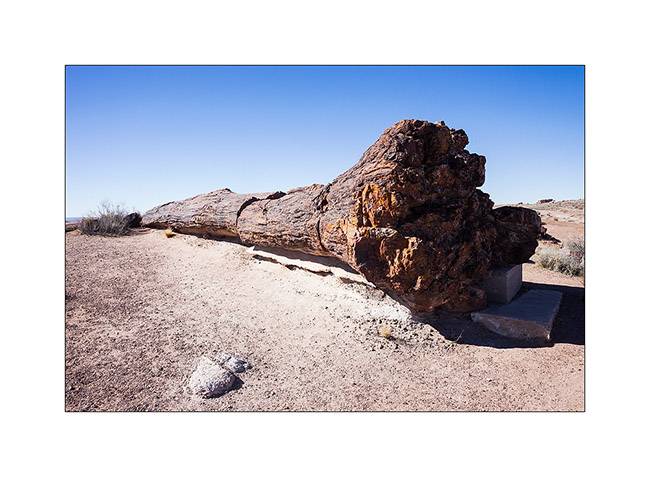
5. The desert surrounding area is varied.
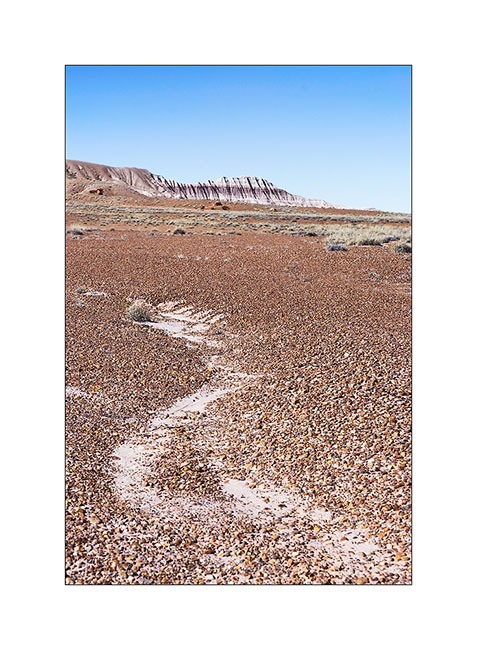
6. Undulation…

7. Mixes…

8. Amazing colors and shapes.

9. Edge of a bentonite mesa taht erosion carves.
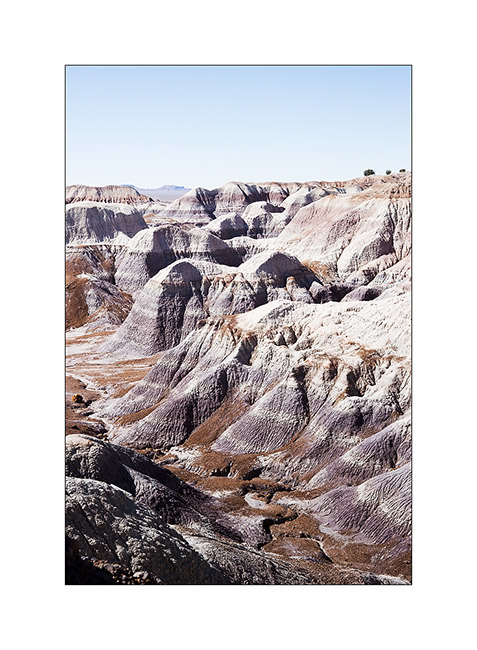
10. This bentonite is less colorful than in other places but the presence of petrified trunks contrasts with the soft shapes of clay.

11. The eroded texture reminds me of some corals…
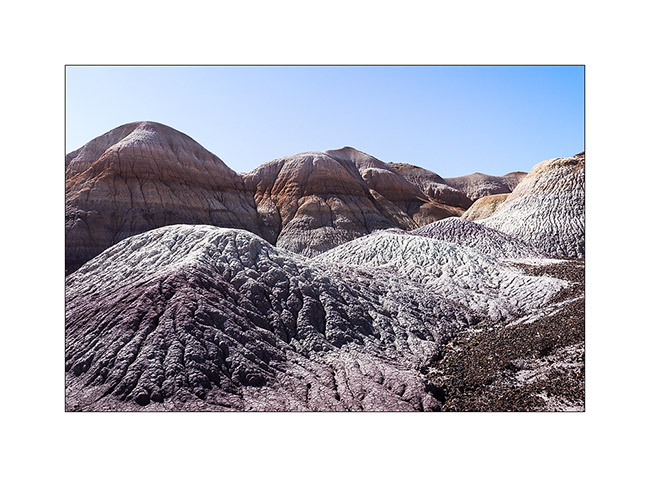
12. Vivalavida then moved to New Mexico, spending a first night at over 7,000 feet above sea level in the forests of the Zuni Mountains.
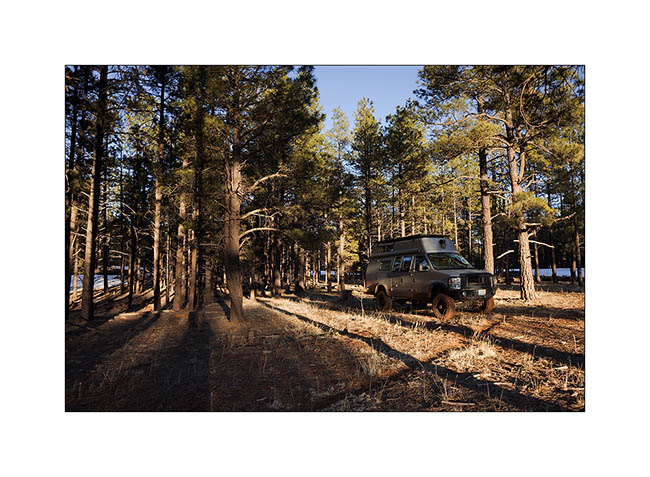
13. The next morning we crossed the Zuni Mountains with sometimes quite rutted and muddy roads…
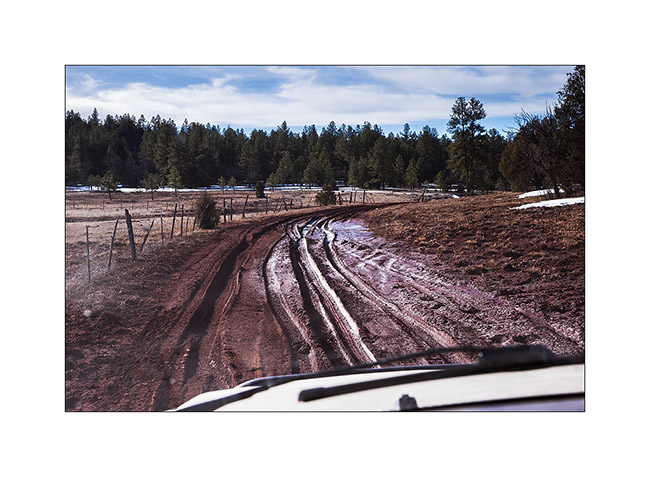
14. Discovery of the pinnacles of Los Gigantes by chance…
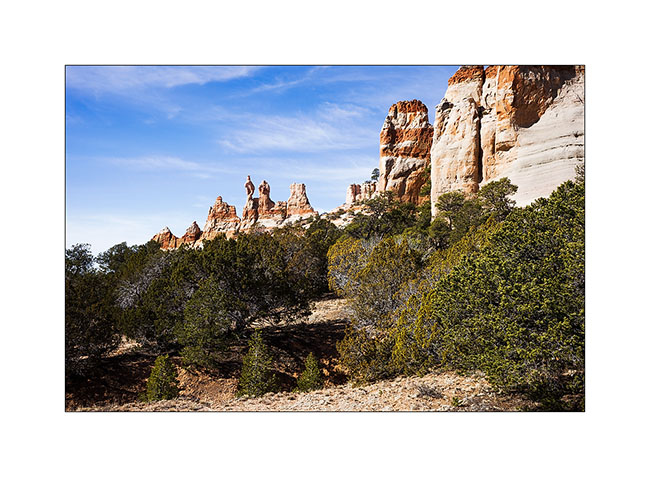
15. A guelta sheltered against a cliff of El Morro.

16. Etching in sandstone describing the passage of some Spanish in 1706.

17. Petroglyph much older, probably around the year 1200.

18. Another petroglyph estimated at 1,400 years BC.

19. “Woodpecker” natural arch.
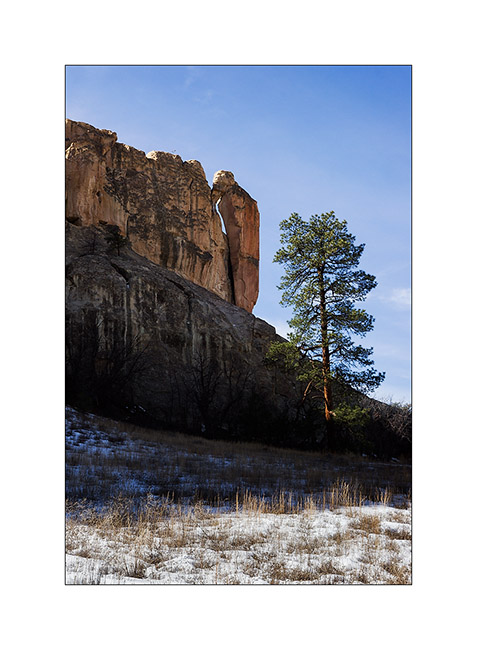
20. Pueblo ruins in El Morro National Monument.

21. Another ruin of the same area.
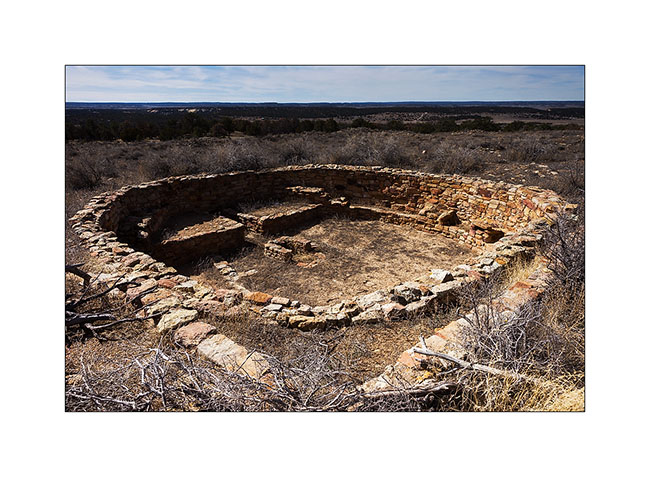
Further discoveries along the East crossing of VivaLaVida to come soon… 😉
Craters and ruins…
On the road to the east, VivaLaVida made some detours, the first close to Flagstaff to discover scoria cones. They appeared very recently, about in year 1080.
1. Mount San Fransisco in a freezing morning, a snowy volcano close to Flagstaff.
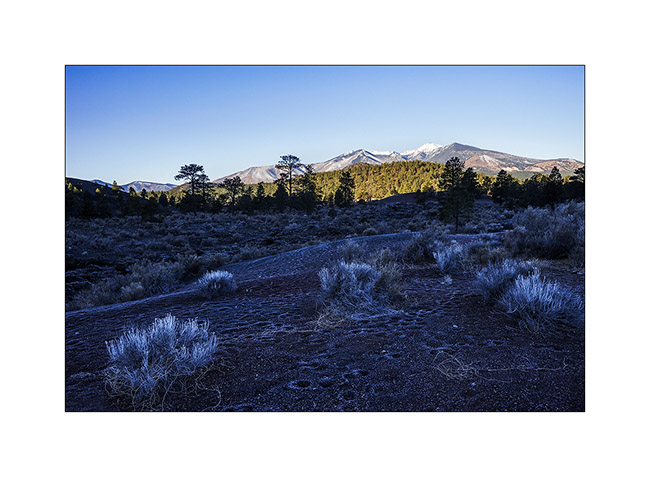
2. Cinder cones around Sunset Crater…
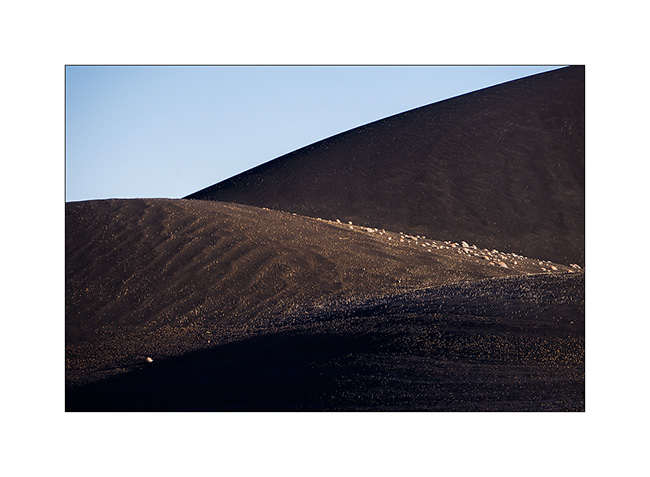
3. The vegetation is sparse and scattered.
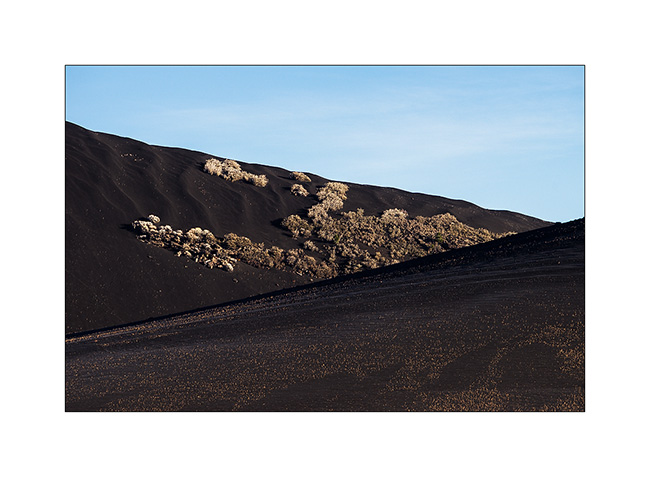
4. First collons… 😉
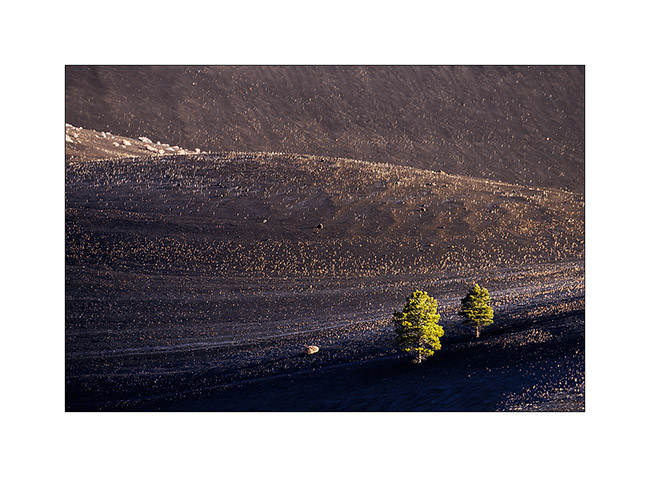
5. Riding the volcano… 😉

6. Some areas are rich in ferrous minerals.

7. A lava bubble (hornito) whose roof collapsed.
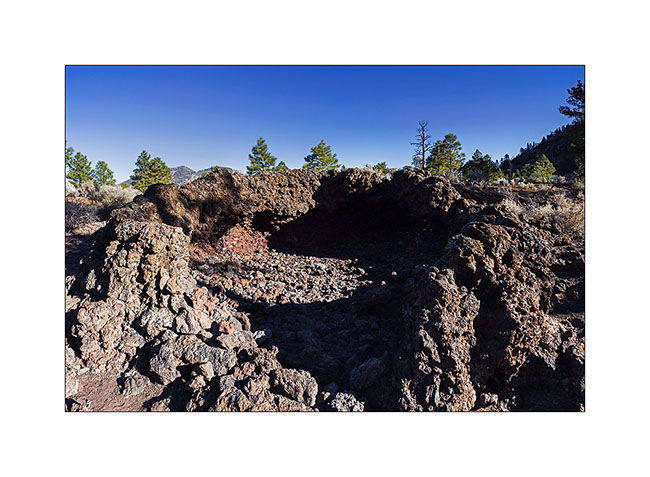
8. Diagonals…
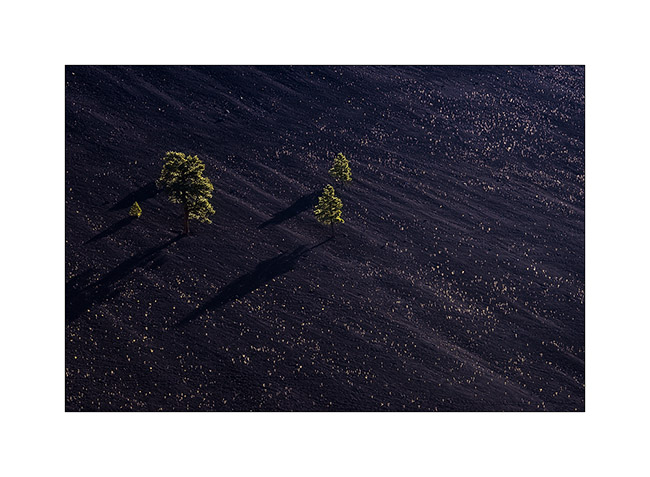
I then went to explore various ruins of Wupatki National Monument, at the limit of the Painted Desert. Several pueblos are grouped within a radius of ten miles.
9. Arrival in Pueblo Wukoki looking like a castle on a cliff.
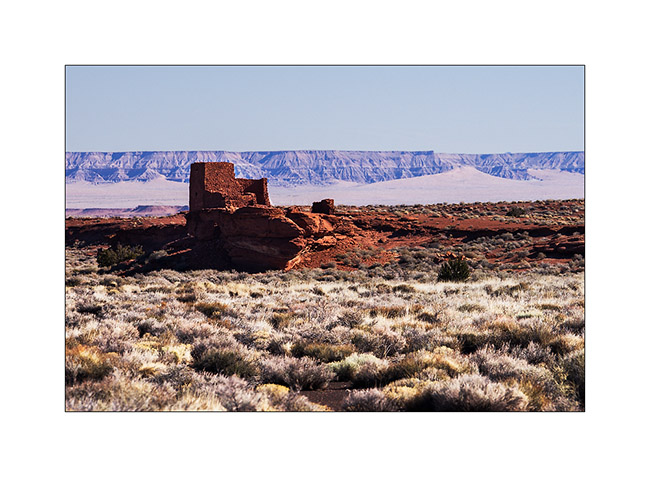
10. Yet this was the home of two or three families.

11. These ruins were built by the Indians who left the Sunset Crater region, about 25 miles away and were inhabited from approx. 1080 to 1200.
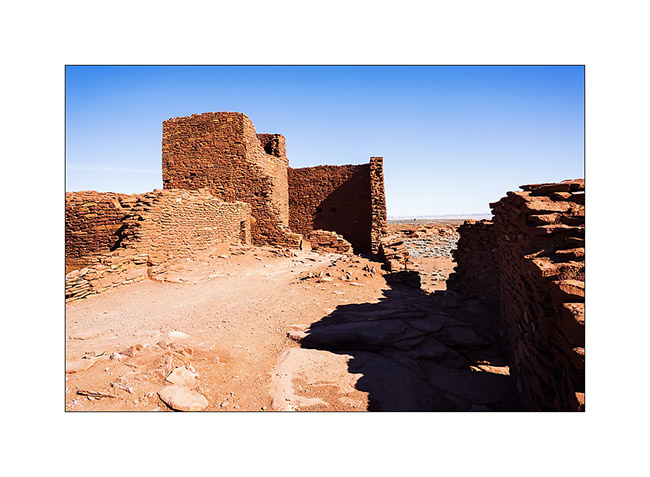
12. Stones to grind seeds.
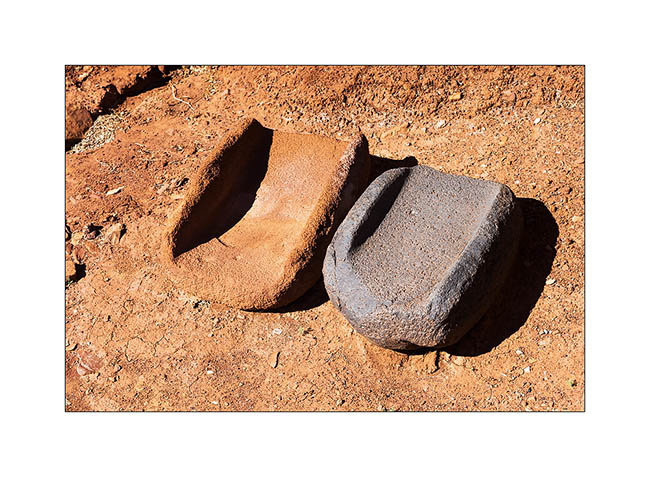
13. Another very impressive pueblo: Wupatki. The circular part of the foreground was a place of council and ceremonies.
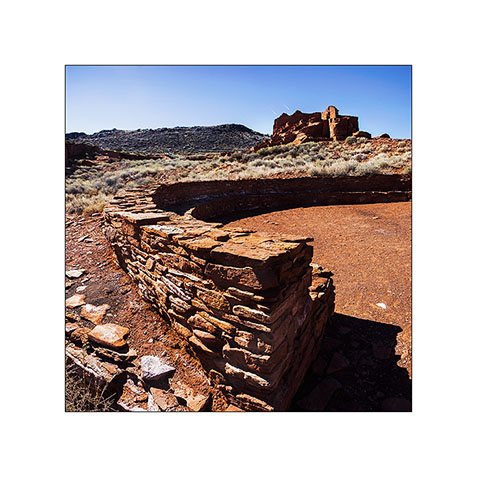
14. Here is a Ballcourt, a kind of arena in which games and trainings were organized. Ballcourts are frequent in southern Arizona and New Mexico but it is the only on known in Northern Arizona; thus assumes that Hoppi Indians who built these pueblos had contact with Southern tribes…
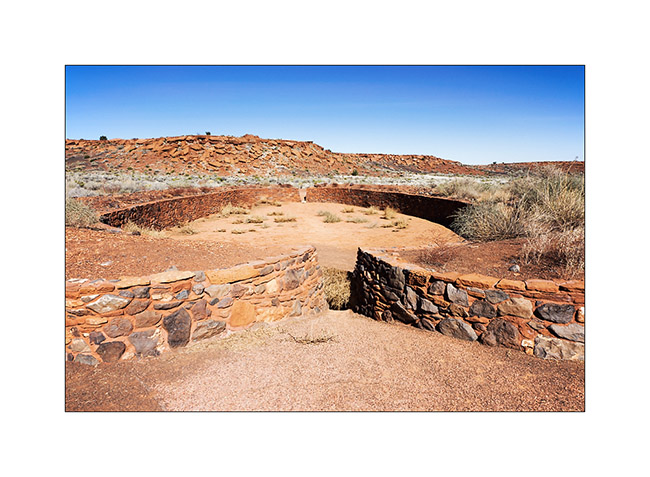
15. An overview of Wupatki Pueblo who had a hundred various rooms.

16. A pothole in the sandstone, a kinf of bowl eroded by water…
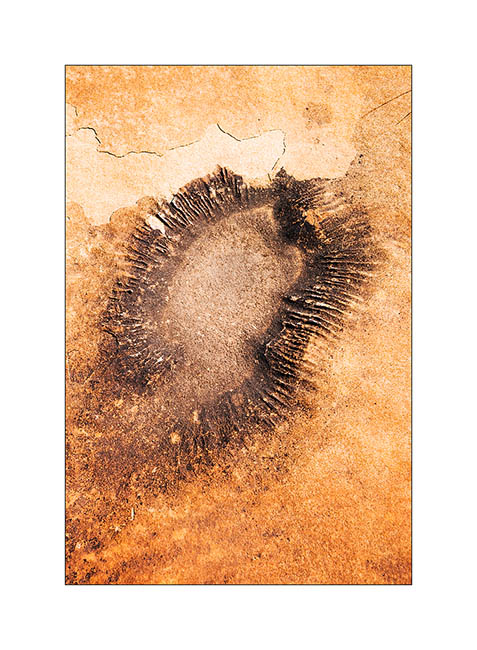
17. Other destruction the Lomaki Pueblo. The canyon on whose banks it was built is not due to erosion; it’s an earth crack created by the seismic activity.
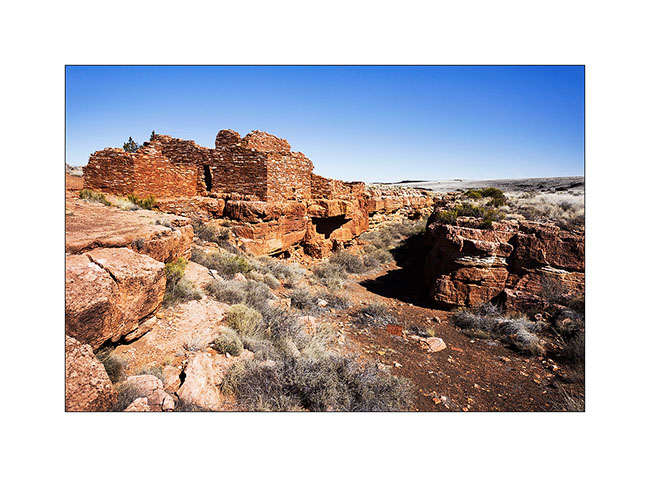
18. Cinder cones dot the landscape; There are nearly 600 registered in the area.
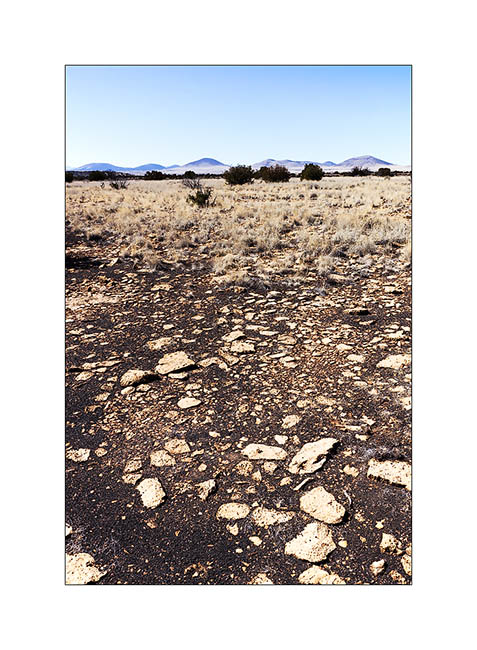
19. Here is a crater but it is a very different origin: it was created by the impact of a meteorite estimated at 140 feet in diameter 50,000 years ago! It hit the desert to the incredible speed of 11 miles/second, creating a shockwave of an equivalent power than a 20-megaton nuclear bomb. The crater is about one mile in diameter and 500 feet deep.
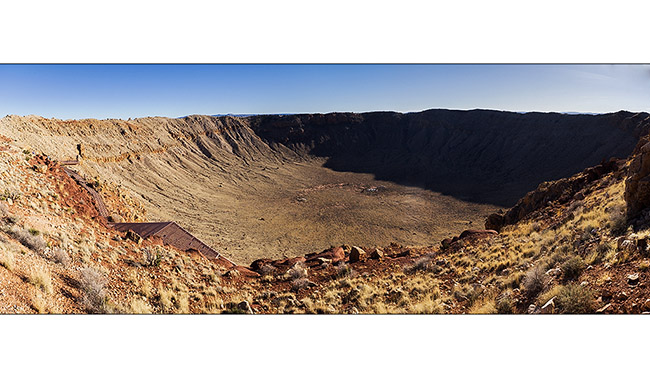
20. In the distance, Mount San Francisco rises above the plain…
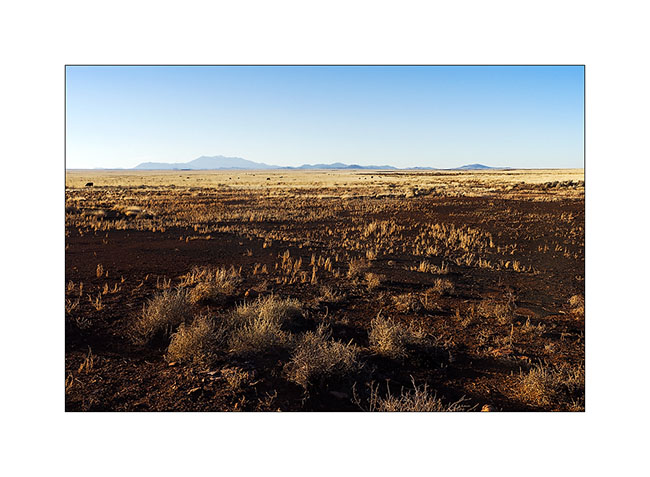
21. I got to a nice oasis at dusk…
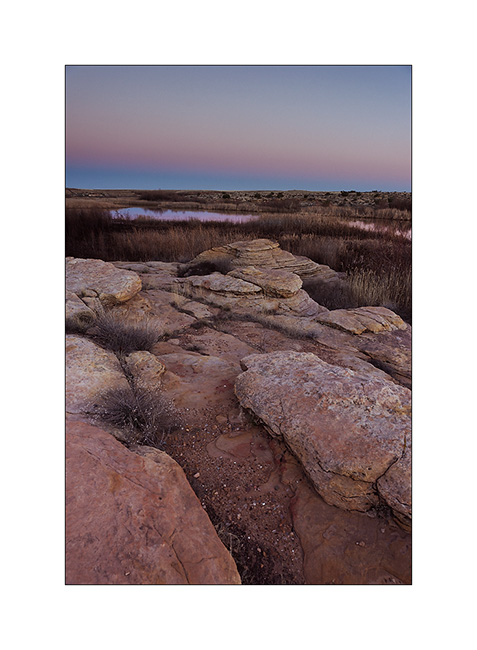
22. Restful tranquility…
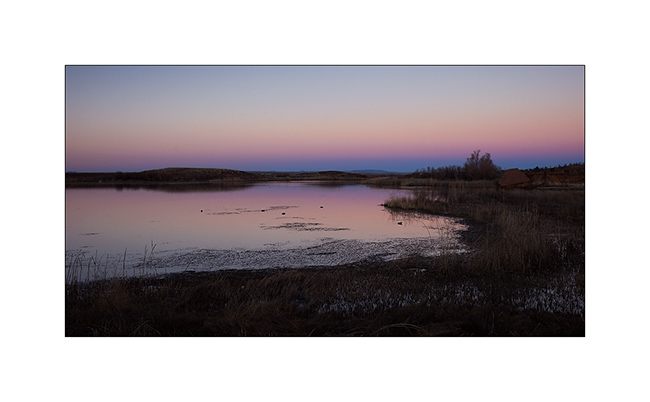
Other discoveries to follow soon. 😉
Winter in Arizona
I had a few days of Arizona winter with summer temperatures. Between 70 and 80 degrees, it changes with the -9 I had a few weeks ago in Utah!
1. Wetland where the Colorado meander between the mountains.
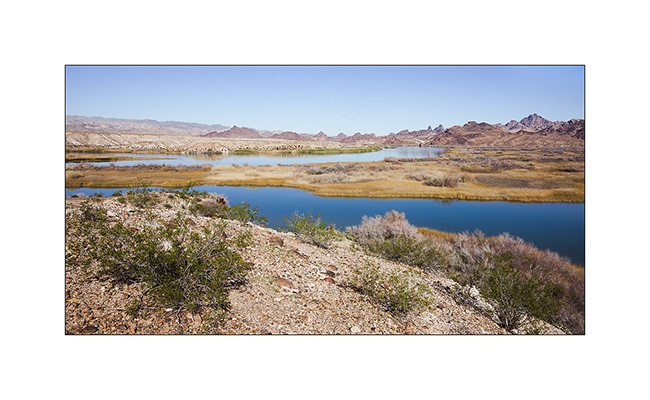
2. Windy camp on the shore of Lake Pleasant (iPhone photo, sorry for the bad quality…)
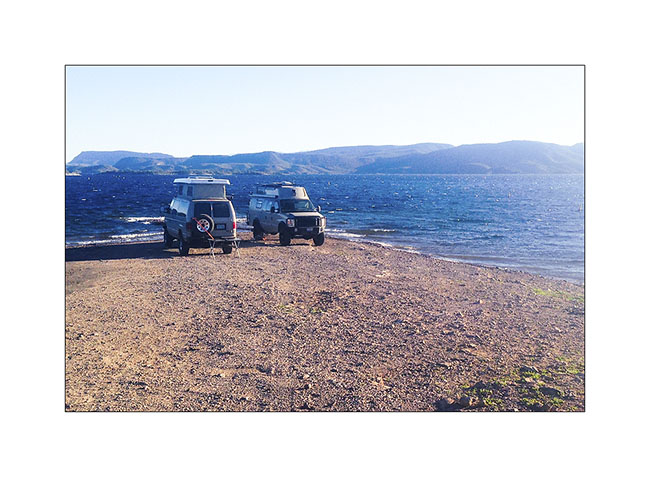
3. VivaLaVida on the road to the Verde River.
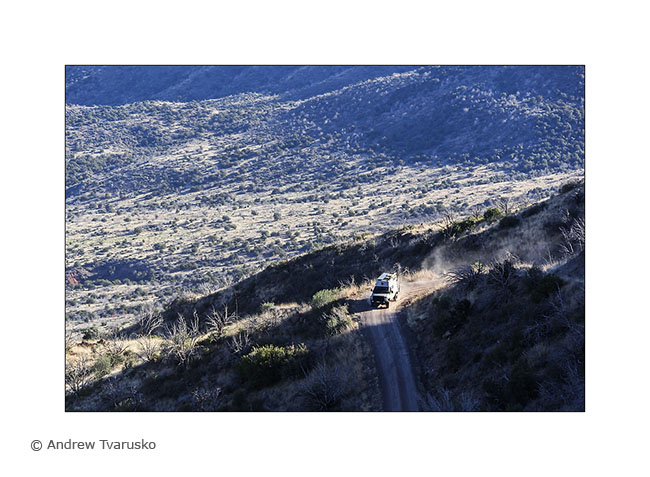
4. Mountain desert.
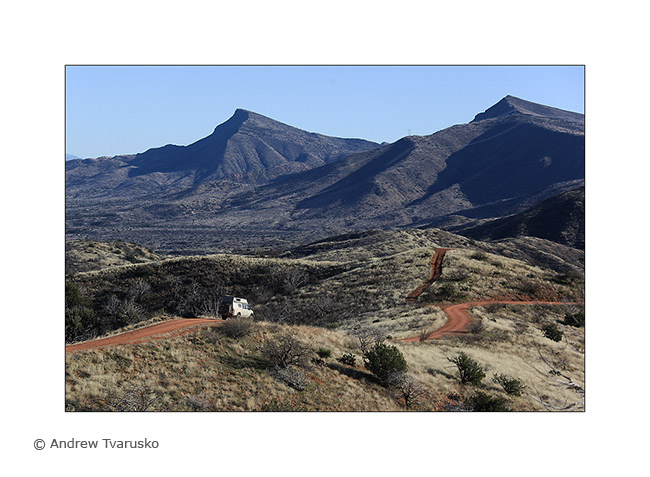
5. L’Arizona, it is also the saguaros, giant cactus which are the symbol of the State.

6. In some glens, trees sometimes hamper progress…

7. … forcing to play the saw or pruning shears…
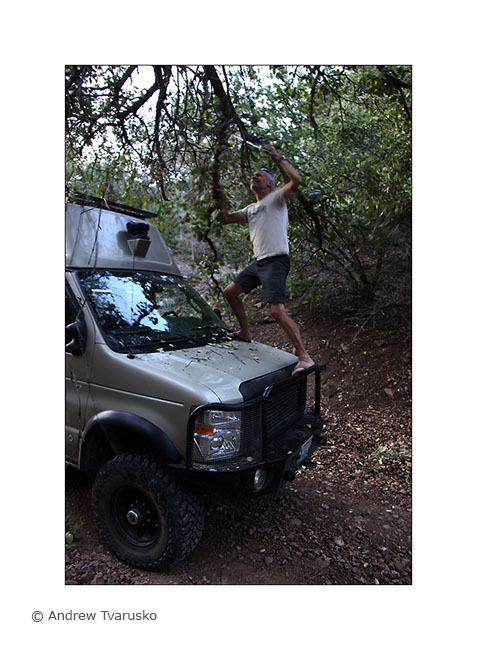
8. Rio Verde Hot Springs, a nice hot spring. There was a resort that burned in the 80ies. Remains the baths above the Verde River.
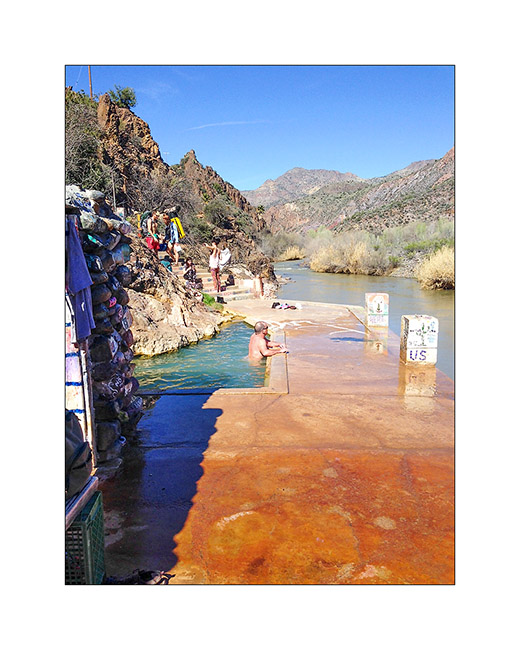
9. You will encounter a Hippies atmosphere, everything has been taged in a spirit of freedom and sharing. Swiming suits are “optional” and many are enjoy the hot water in their nude…

10. The “inner” basin whose water is warmer.
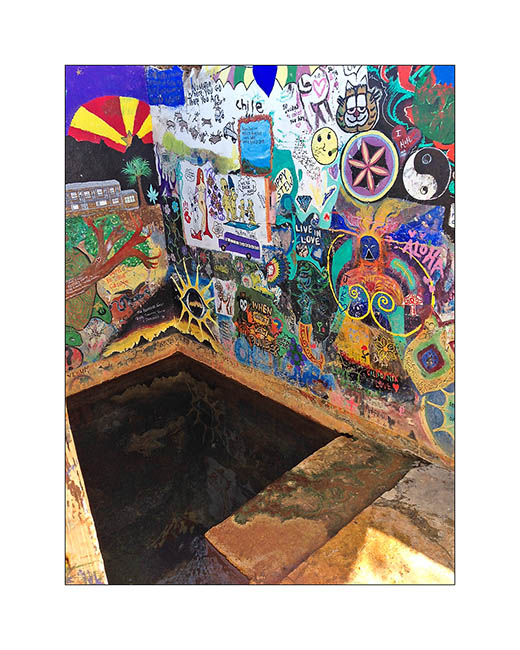
11. Last drink with Andrew who will continue his vacation in the South, well … if it doesn’t change his mind! 😀

12. Short stop at the magnificent ruins of Montezuma Castle inhabited three centuries between 1,100 and 1,400.
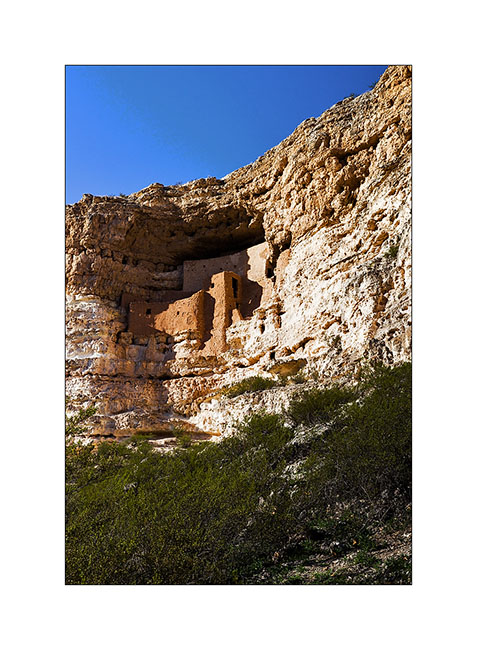
13. Sunset over Red Rocks near Sedona.

14. Chapel of the Holly Cross in Sedona. It was built in 1956, rather futuristic for its time..!

15. Cactus…

16. And here is a little serie of the small town of Flagstaff.
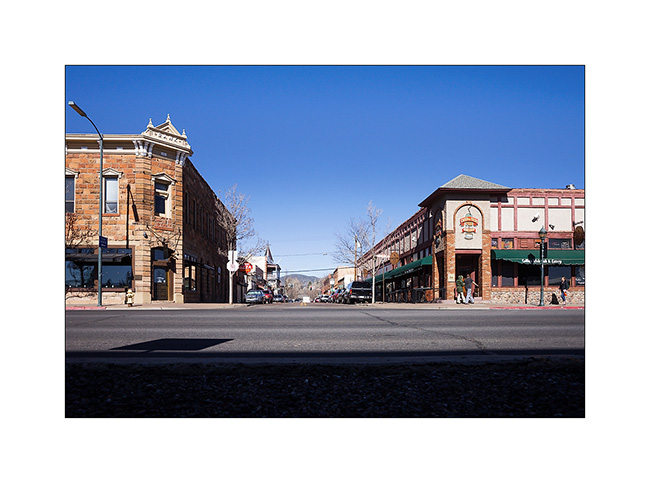
17. Hotel Monte Vista.
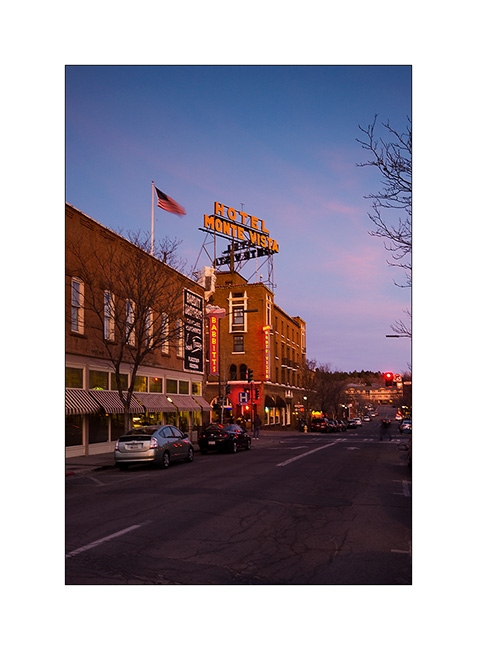
19. In Main Street.
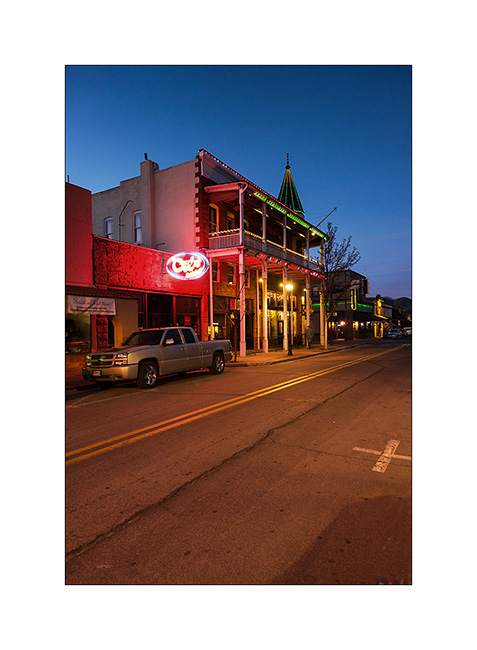
20. Back street.
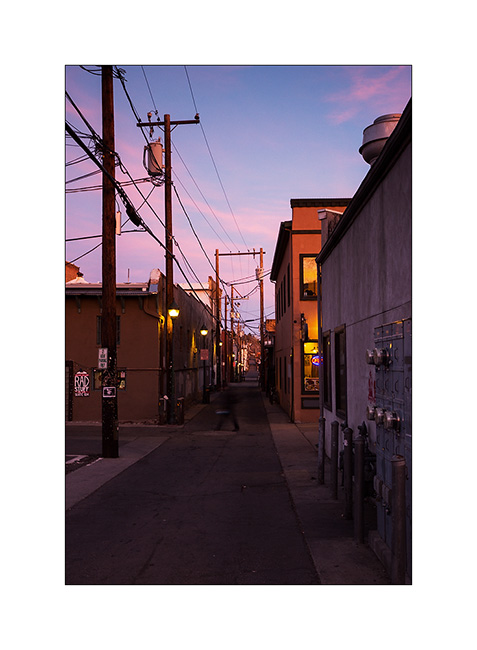
So much for today. Vivalavida is currently heading East to reach North Carolina, where I’m gonna leave her in good hands during my stay in Switzerland. She will go through all the US toward East in ten days, nearly 2,200 miles.
Thus, updates will likely space themselves out before they stop in March, you will not hold it against me…
ay tuned for some pictures of this crossing coming soon… 😉
Californian varieties
Having failed to reach Cerro Gordo through the ridge road blocked by snow, we drove up the classic route. This is an abandoned mining town that was home to 2,000 people between 1856 and 1930. It had up to 7 saloons and the basement is dug over 35 miles (55 km) of galleries. It generated the largest amounts of silver from all the American West at this time.
1. Some buildings of this mining Ghost Town are made of corrugated sheet.
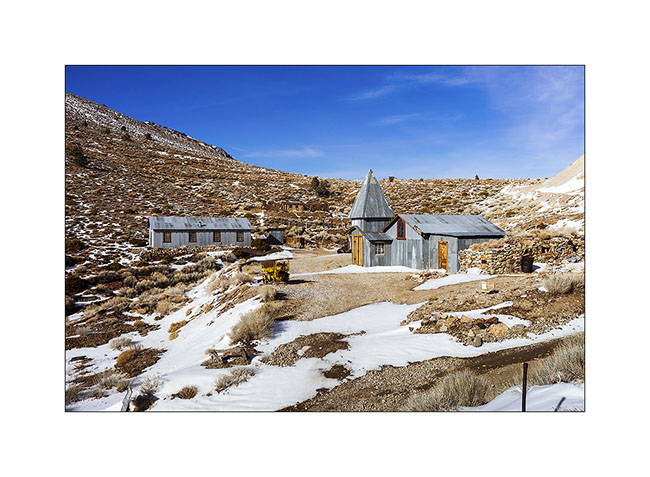
2. General Store transformed in a museum.
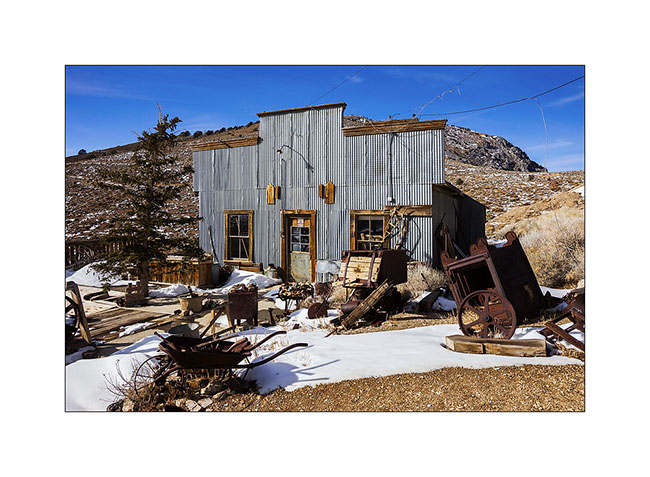
3. A 1946 truck.
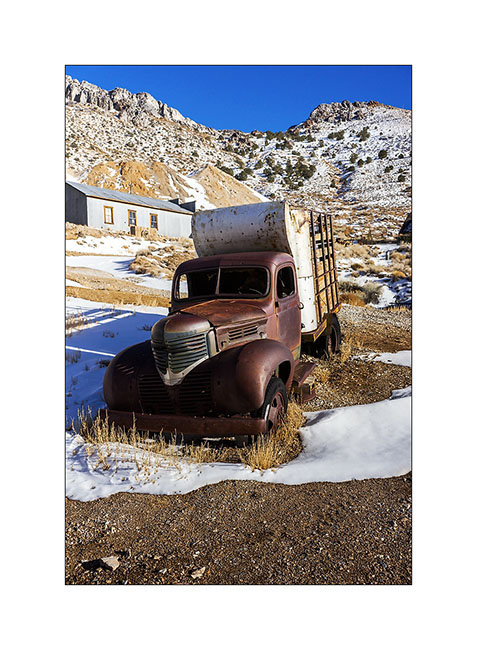
4. Splendid furnace in hotel.

5. A restroom…
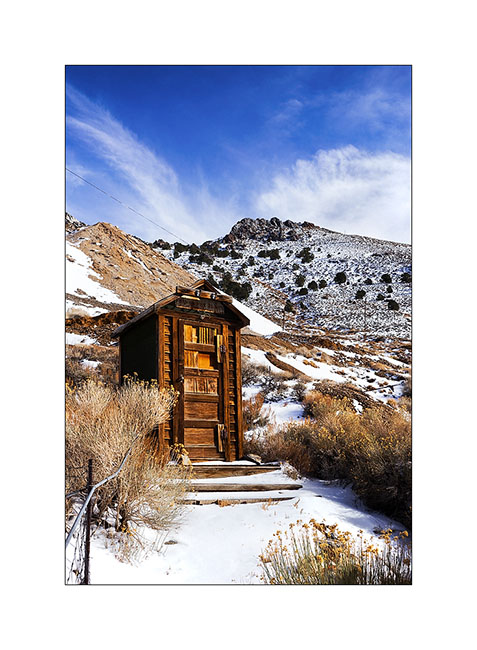
6. The next day, we stopped at Trona Pinnacles.

7. the sun is going Under the clouds.
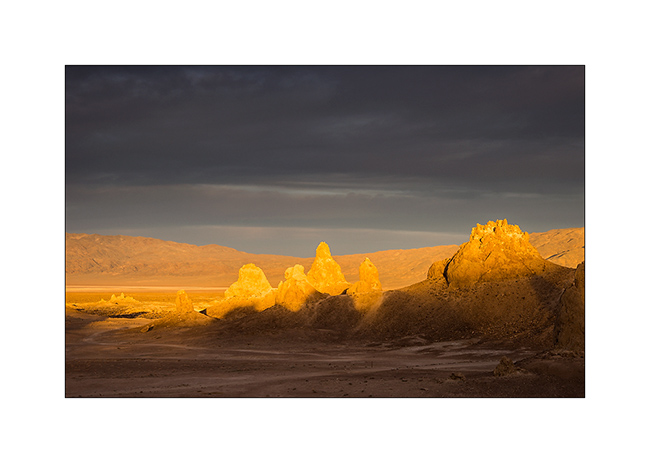
8. This is tuff chimneys such as Mono Lake, which formed in a lake between 100,000 and 10,000 years before our area.

9. Some are 140 feet high.

10. Flaming sunset.

11. Unlikely colors…

12. Light reflected by the purpled clouds…
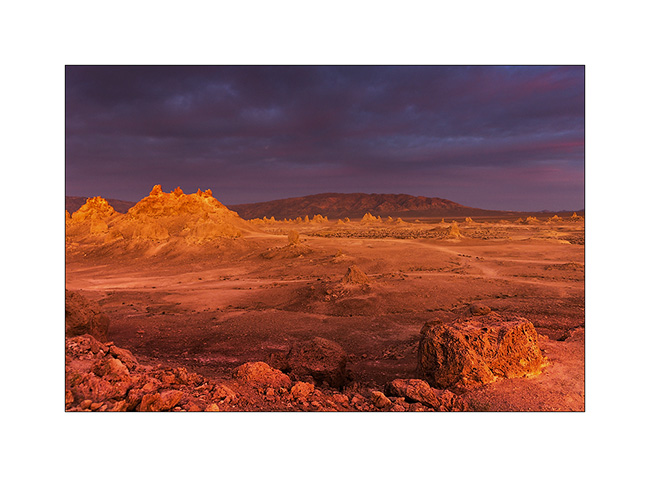
13. Another discovery : Red Cliffs Canyon.

14. The errosion sculpted amazing forms, sometimes colored…
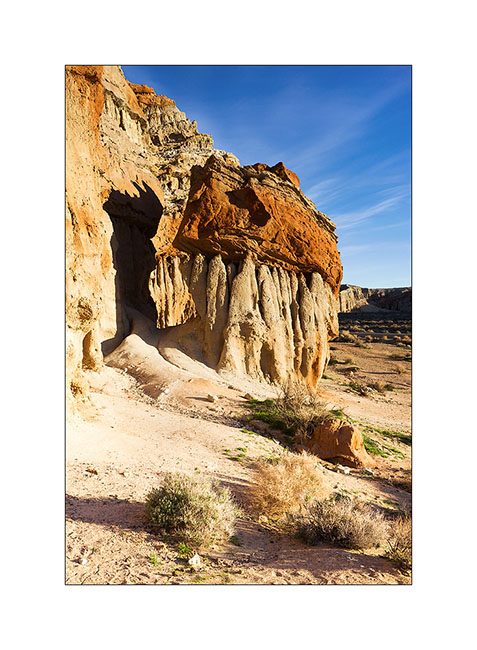
15. … sometimes gray.
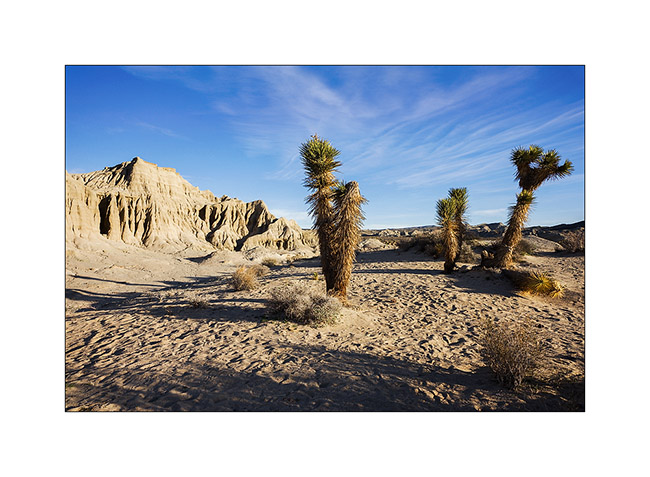
Change of scenery! We stayed for three days at the “King of the Hammers”, an off road race! The event takes place in the desert and alternates very fast sections on sandy tracks and pure rock crowling passages in canyons full of large blocks and obstacles. The winner took almost 9 hours to browse through three rounds of 45 miles.
16. Vehicles are buggies which most are between 800 and 1,000 hp!

17. This one has a distant silhouette of Jeep…
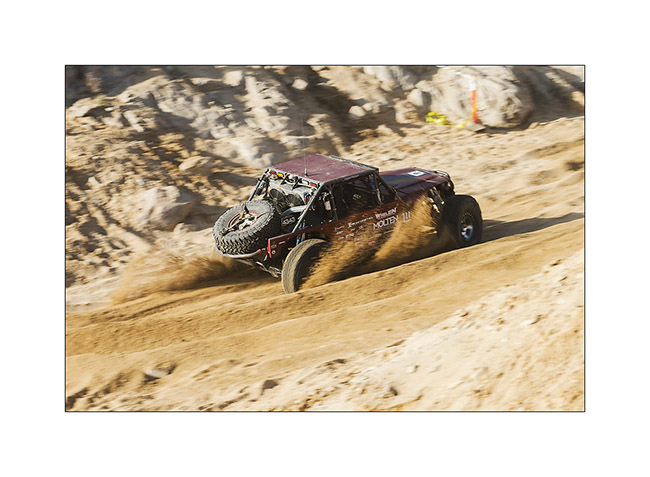
18. Back Door canyon entry.
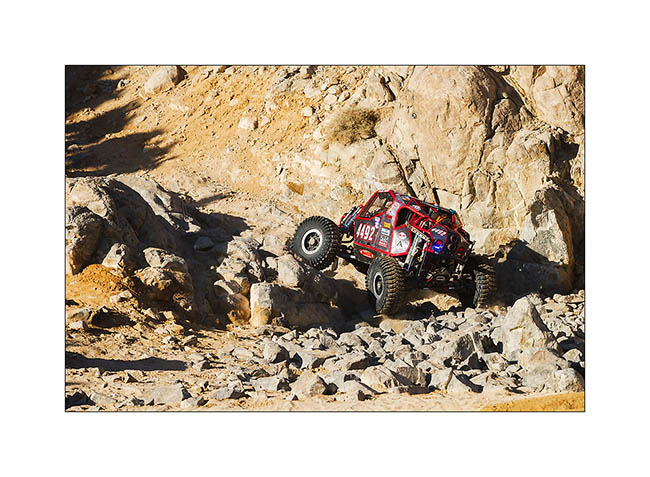
19. Winching an obstacle, here a more than 10 feet high step! The co-driver is also the one that will tie the winch.
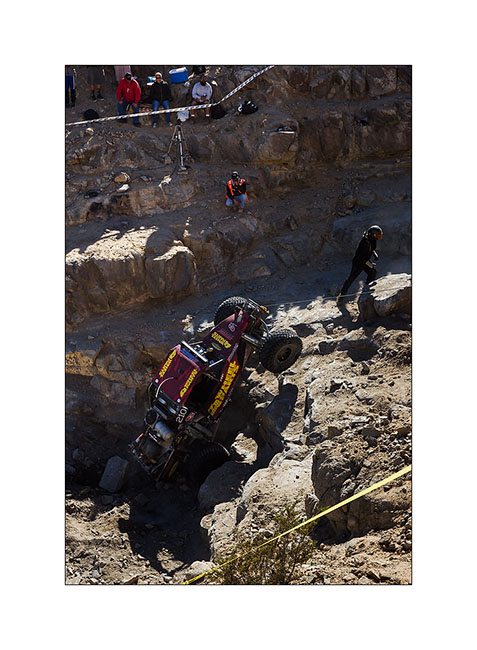
20. Some buggies are single seater.

21. Power passing…
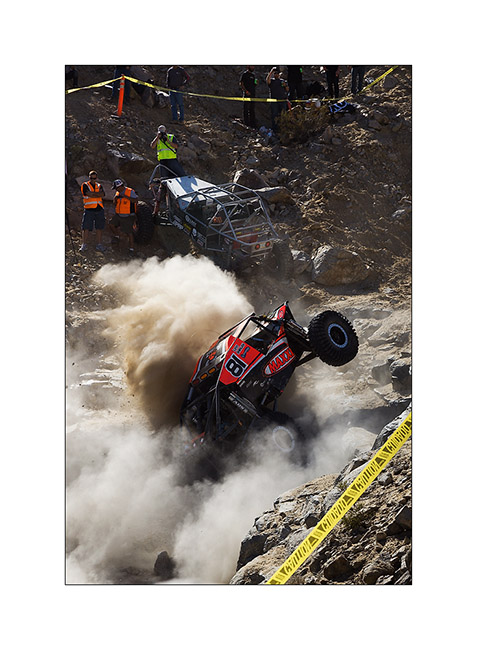
22. Up in Back Door canyon, more than 600 feet above the desert.
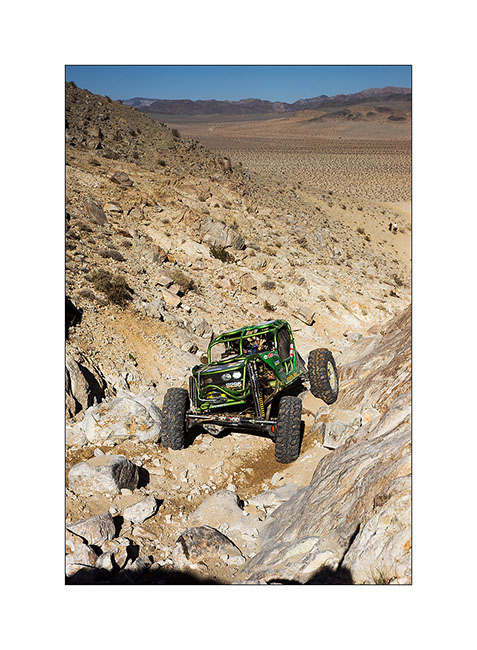
23. Another obstacle that seems less impressive than reality on this image.

24. It is a city of nearly 30,000 inhabitants that rises from the desert during the race week.
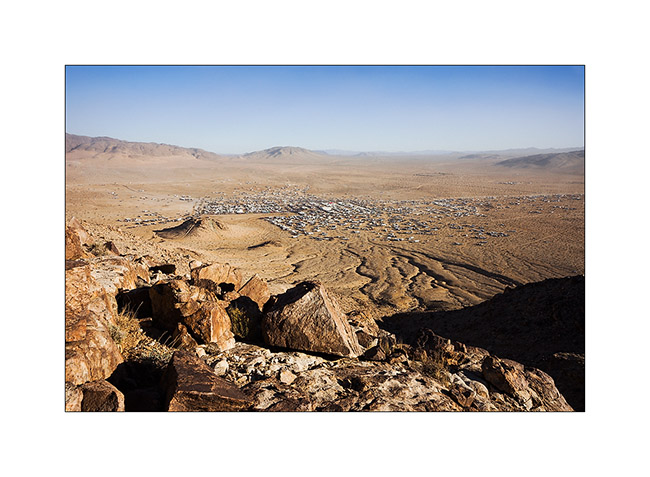
Here is a short video taken with my cell phone…
Once the race is over, dozens of private vehicles are trying to hit obstacles of the race with the encouragement of hundreds of spectators that beer makes quite noisy ..! Here are two more videos, just to give you an idea of the atmosphere. They were shot around midnight…
After this fun experience, VivaLaVida began his eastward migration toward East travelling back to Arizona for a few days, still followed by Baja Shaker… To come soon. 😉

 D5 Creation
D5 Creation